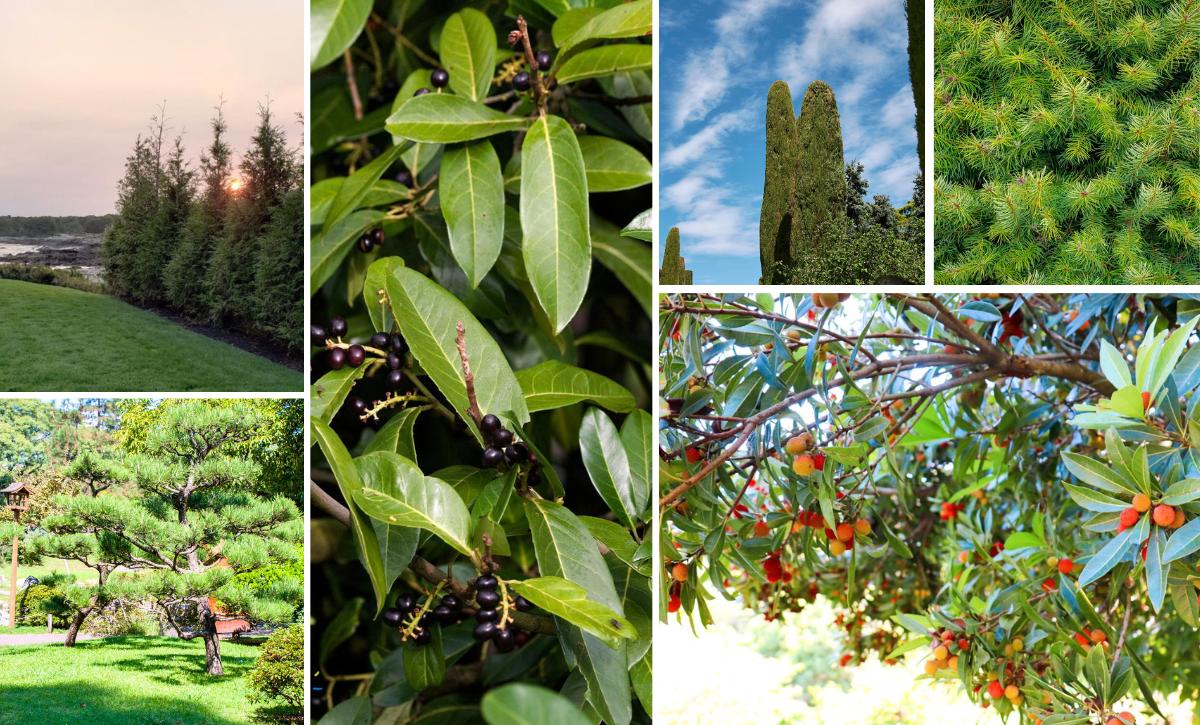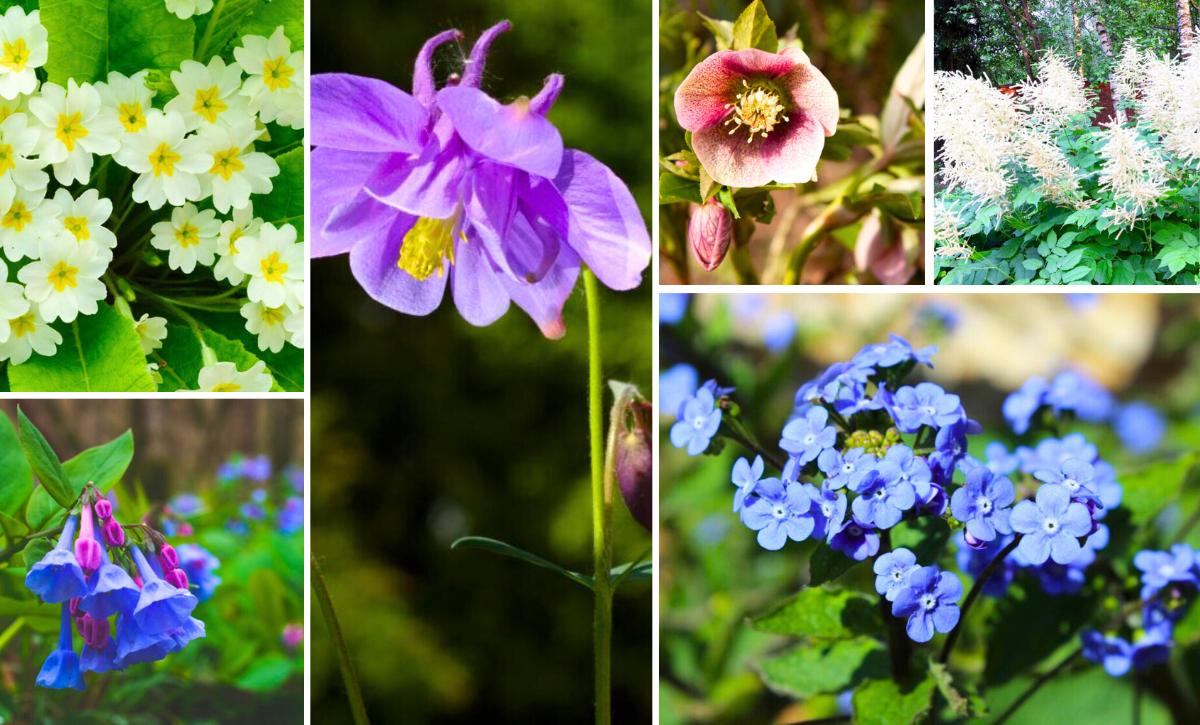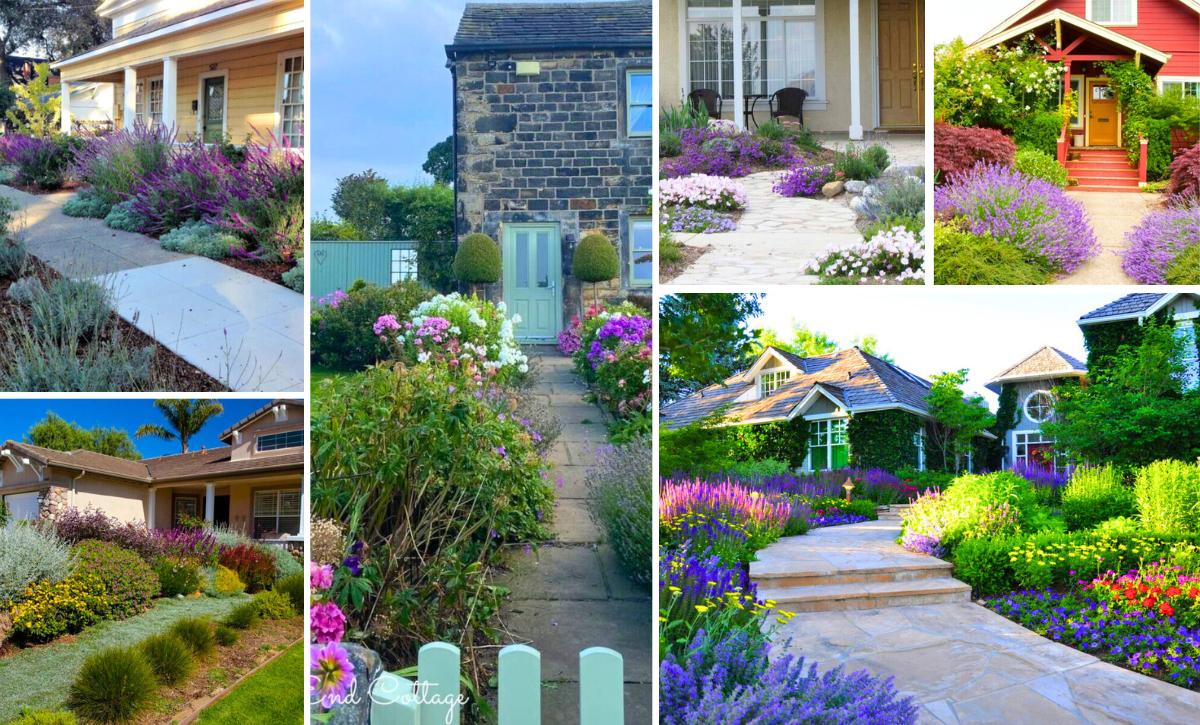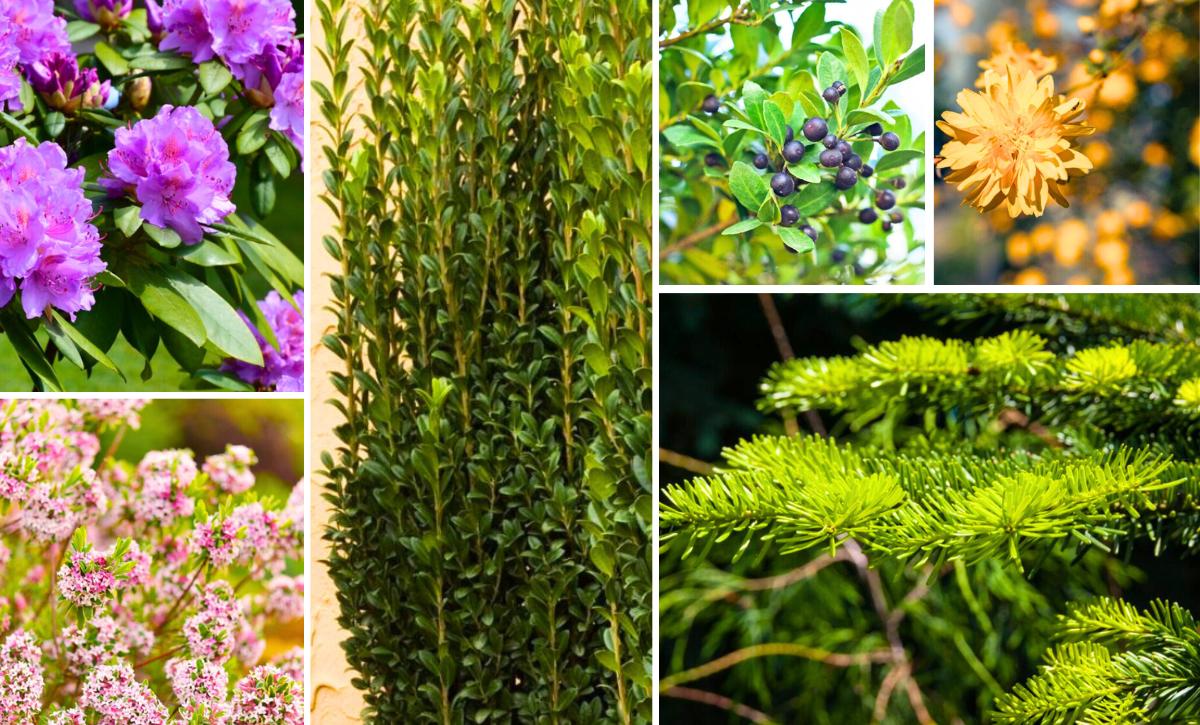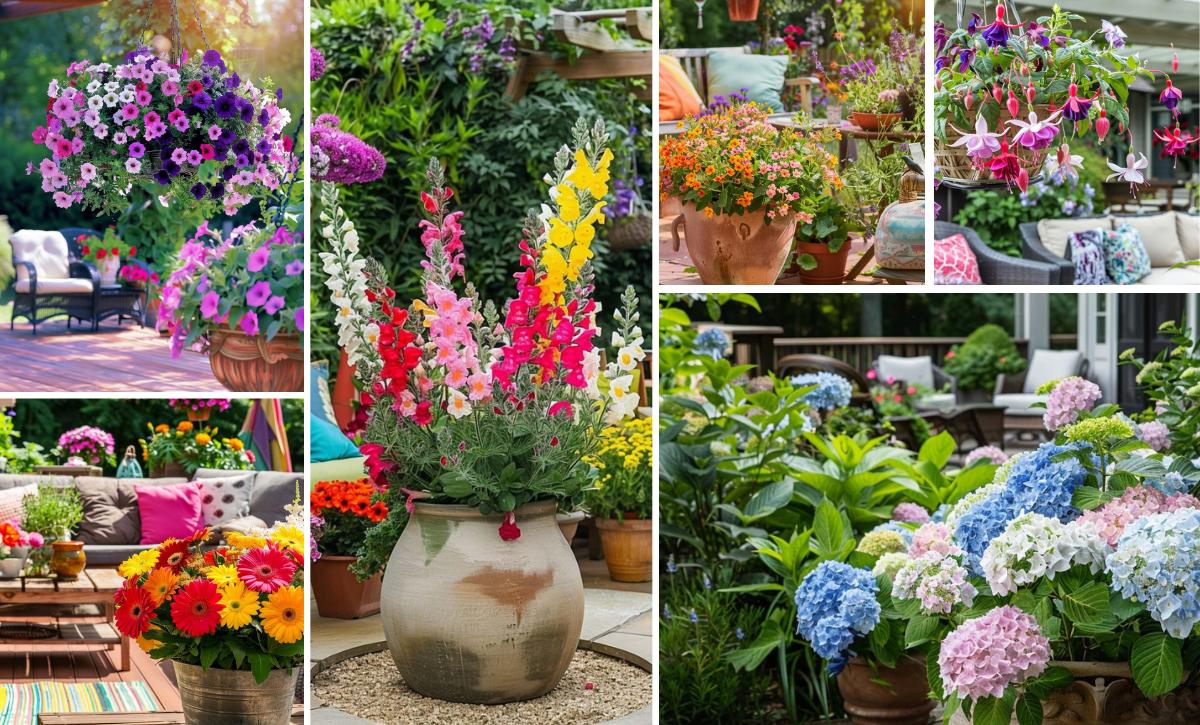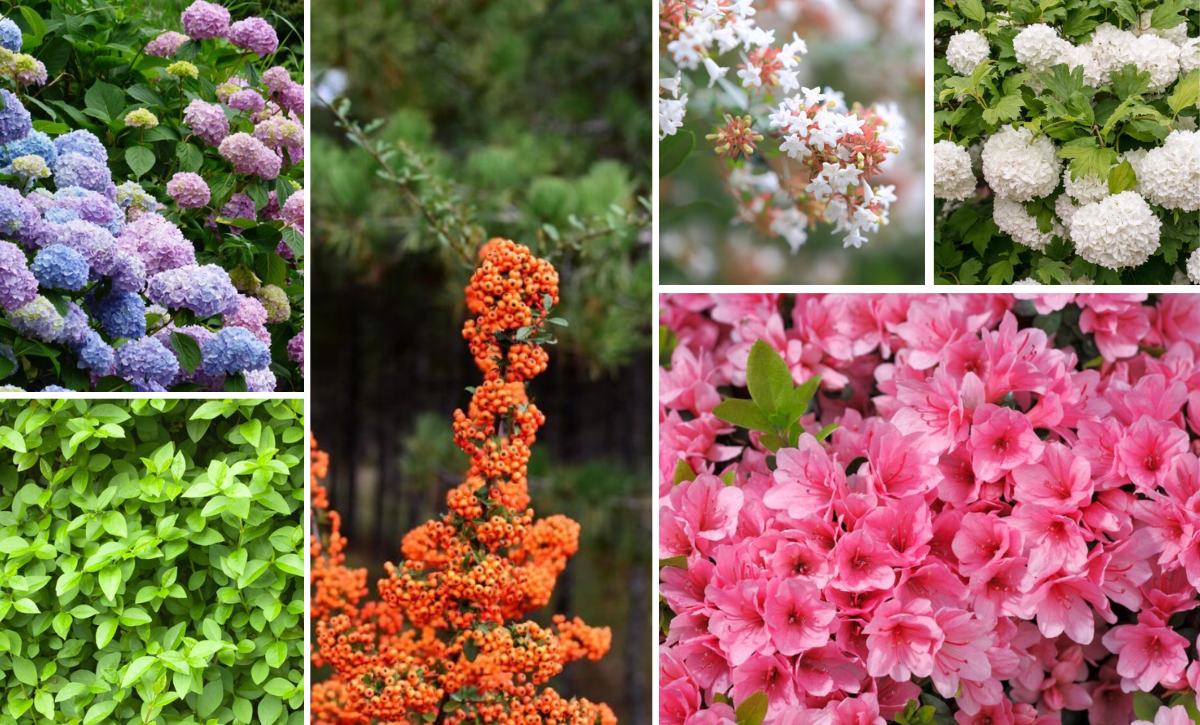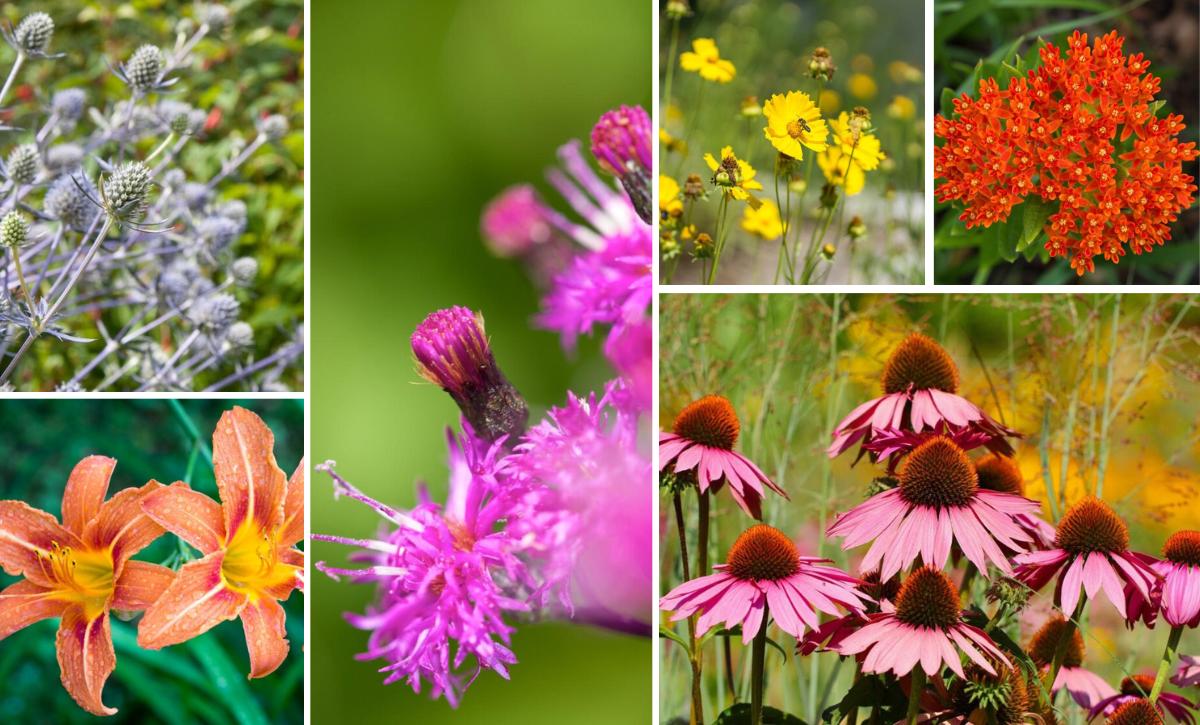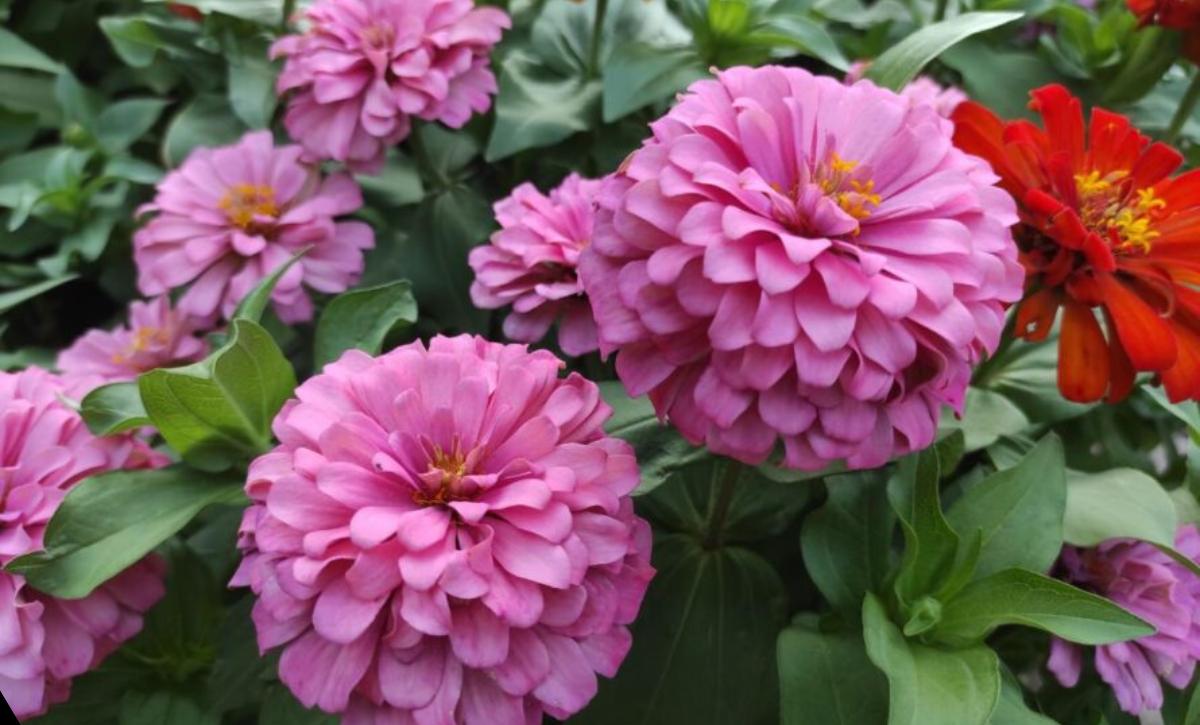Transform your patio into a vibrant and serene paradise with these 22 beautiful potted flowers.
Whether you want to add a splash of color, fragrant blooms, or unique foliage, these plants are perfect for creating an inviting and picturesque outdoor space.
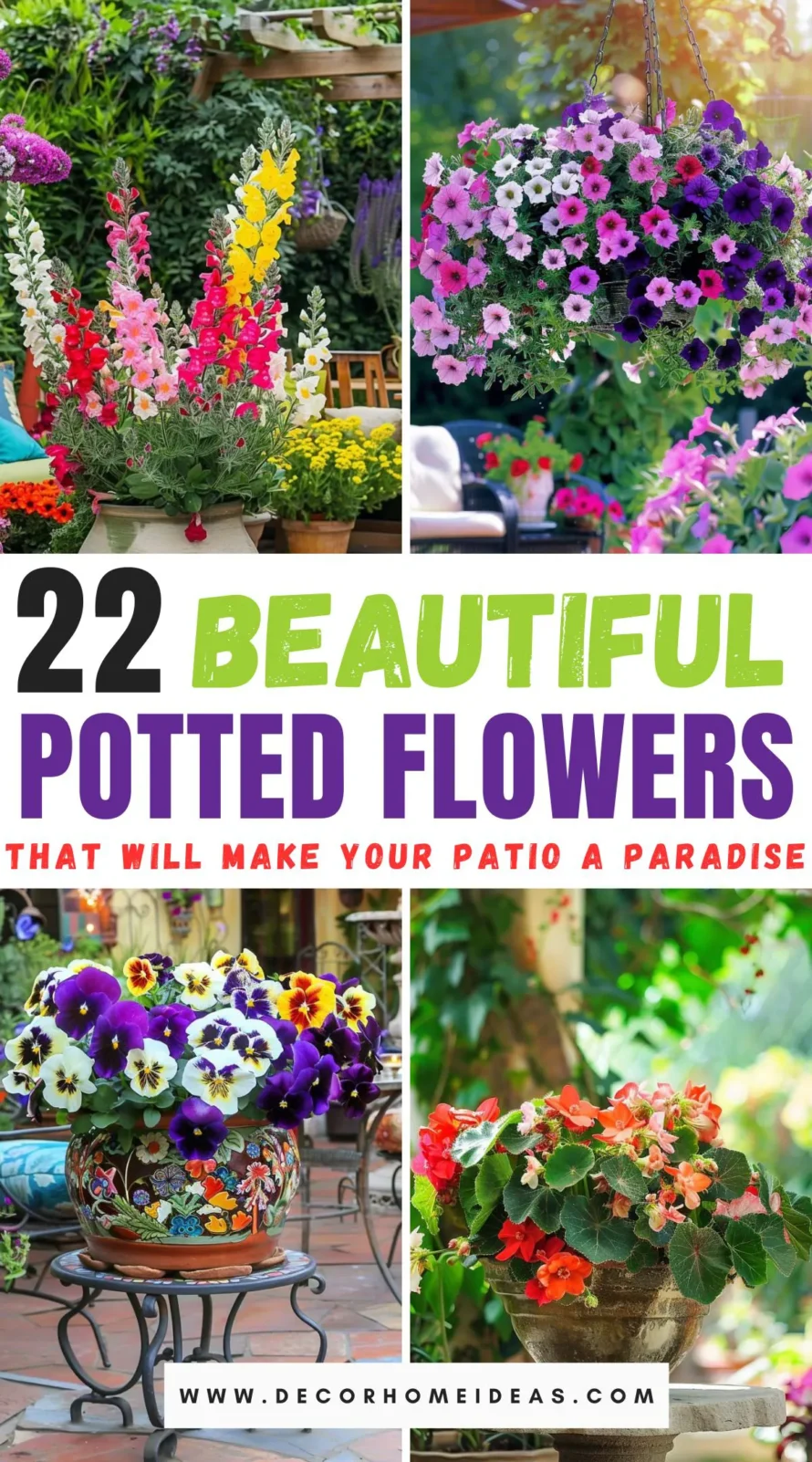
From the bold and bright geraniums to the elegant and aromatic lavender, discover the best-potted flowers to enhance your patio and make it a delightful retreat.
Get ready to be inspired and bring your patio to life with these stunning floral choices!
1. Geraniums
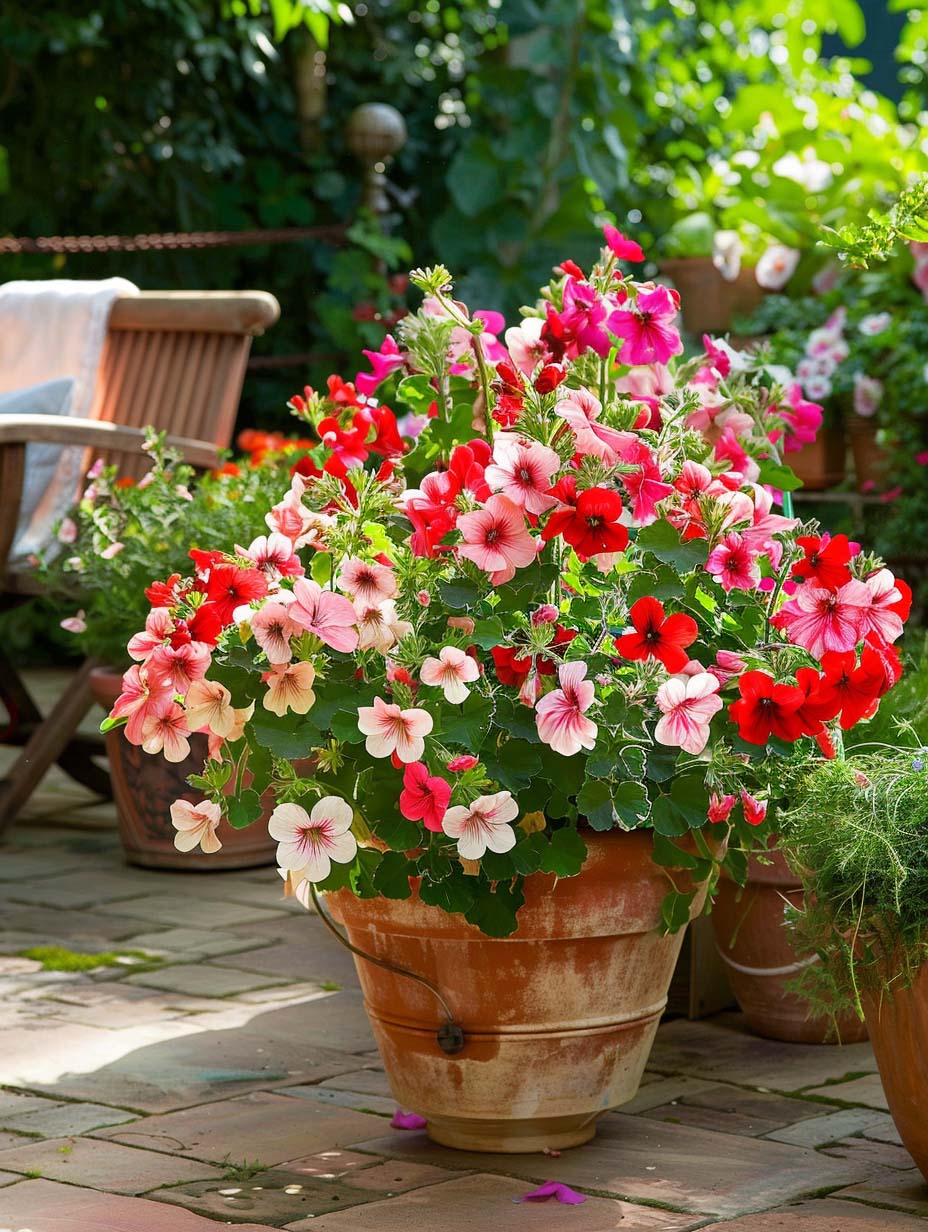
Geraniums are an excellent choice for patio containers due to their vibrant colors and long blooming period.
These hardy flowers thrive in various climates and are relatively low-maintenance, making them ideal for both novice and experienced gardeners. Geraniums are available in a wide range of colors, including red, pink, white, and purple, allowing you to create a colorful and inviting patio space.
Simple facts about geraniums include their preference for well-drained soil and sunny locations, although they can tolerate partial shade.
They require regular watering, especially during hot, dry periods, but it’s essential to avoid waterlogging, which can lead to root rot. Deadheading spent blooms can encourage continuous flowering throughout the growing season.
An interesting fact about geraniums is their use as natural insect repellents.
The essential oils in geraniums have properties that can deter pests like mosquitoes, making them a practical and aesthetic addition to your patio.
Moreover, some varieties of geraniums, such as scented geraniums, can fill your patio with pleasant fragrances, enhancing your outdoor experience.
Best USDA Zones: 9-12 (can be grown as annuals in cooler zones)
2. Petunias
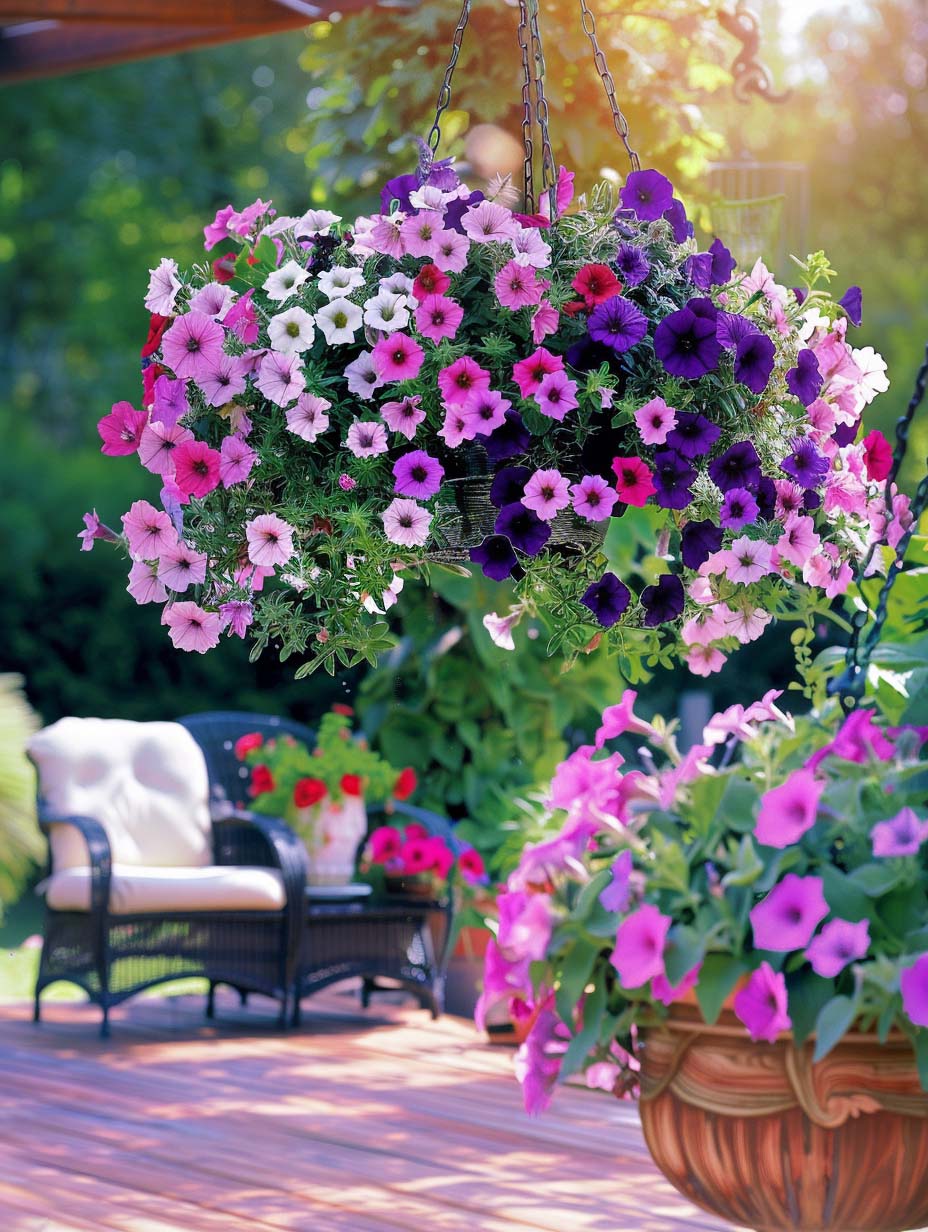
Petunias are popular patio flowers due to their versatility and prolific blooming. These plants are available in a wide array of colors and patterns, allowing for creative and dynamic floral displays.
Petunias can be grown in hanging baskets, containers, or garden beds, making them a flexible choice for any patio design.
Petunias thrive in full sun and well-drained soil. They require regular watering and benefit from occasional feeding with a balanced fertilizer to promote continuous blooms.
One of the appealing aspects of petunias is their ability to self-clean, meaning the spent flowers naturally drop off, reducing the need for deadheading.
An interesting fact about petunias is their night fragrance. While many flowers release their scent during the day, some petunias, particularly the grandiflora varieties, emit a sweet fragrance in the evening.
This makes them an excellent choice for patios where you might enjoy relaxing in the evenings, adding a sensory delight to the ambiance.
Best USDA Zones: 9-11 (can be grown as annuals in cooler zones)
3. Begonias
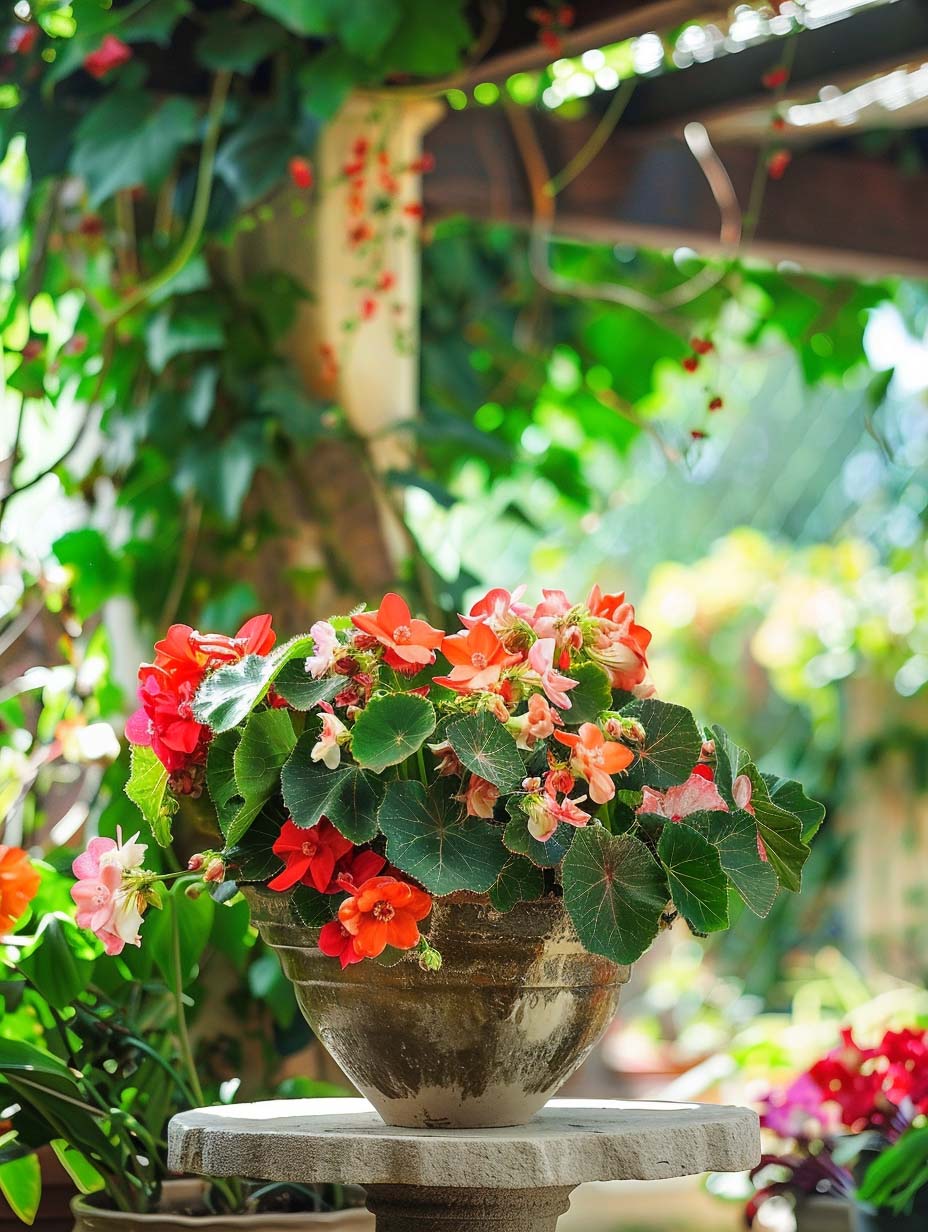
Begonias are a great choice for shaded patios due to their ability to thrive in low-light conditions. These flowers are known for their striking foliage and vibrant blooms, which can add a splash of color to any shady spot.
Begonias are available in various types, including wax begonias, tuberous begonias, and rex begonias, each offering unique foliage and flowers.
Begonias prefer well-drained soil and regular watering but are susceptible to overwatering. They thrive in partial to full shade and can tolerate indirect sunlight. These plants are relatively low maintenance, making them suitable for busy gardeners or those new to gardening.
An interesting aspect of begonias is their use in medicinal practices. Some cultures have used begonia extracts for their anti-inflammatory properties.
Additionally, begonias are known to improve air quality by filtering toxins from the air, making them not only a beautiful but also a beneficial addition to your patio.
Best USDA Zones: 10-11 (can be grown as annuals in cooler zones)
4. Marigolds
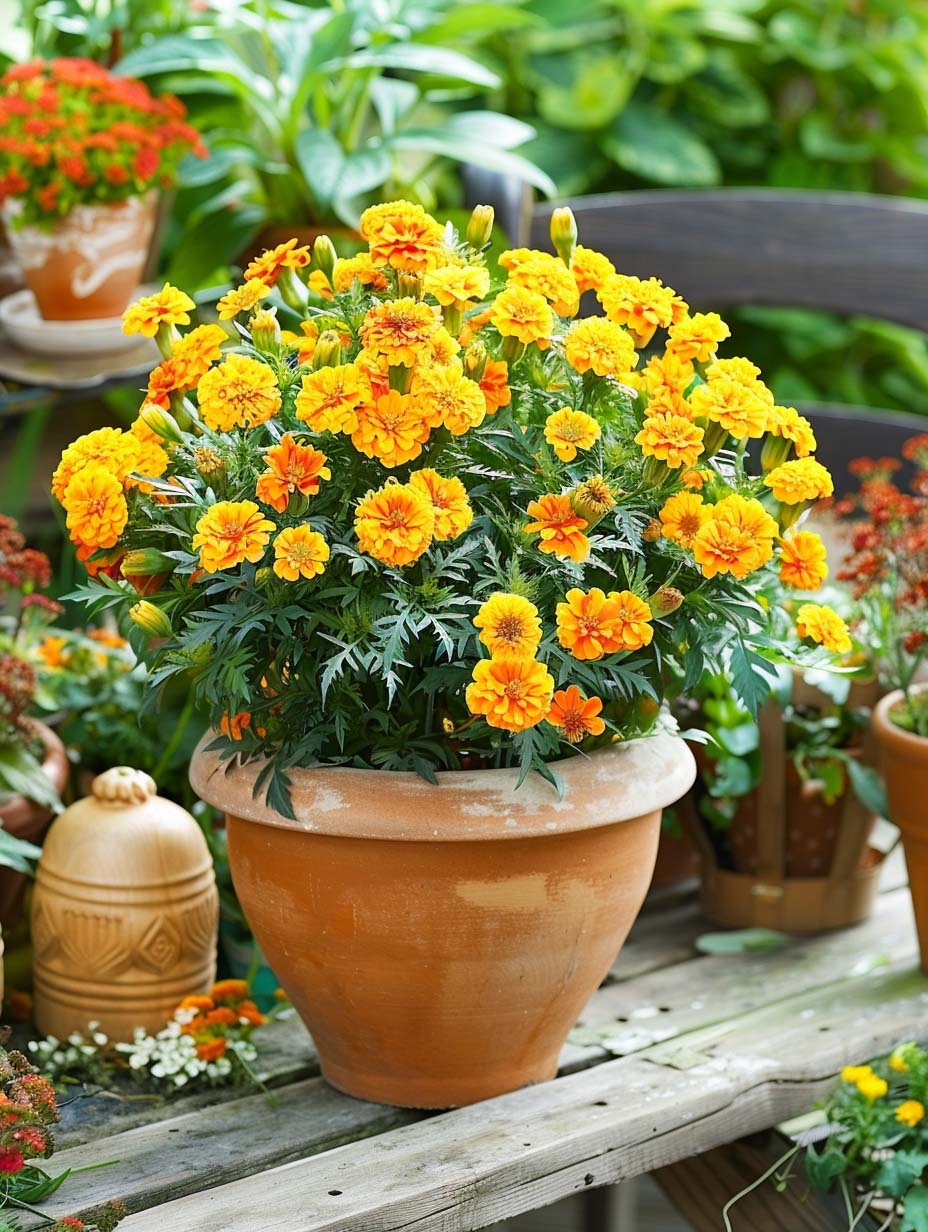
Marigolds are a wonderful choice for patio containers due to their bright, cheerful colors and ease of growth. These flowers are known for their hardiness and ability to thrive in various conditions, making them perfect for adding a vibrant touch to your outdoor space.
Marigolds come in shades of yellow, orange, and red, and can bloom continuously from spring until the first frost.
Marigolds prefer full sun and well-drained soil, although they can tolerate poor soil conditions.
They are relatively low maintenance, requiring regular watering but not overly fussy about fertilization. Deadheading spent flowers can encourage more blooms, keeping your patio looking lively throughout the growing season.
An interesting fact about marigolds is their pest-repellent properties. Marigolds emit a scent that can deter many garden pests, including nematodes, aphids, and even mosquitoes.
This makes them a practical choice for patios, helping to protect other plants and reduce the presence of annoying insects.
Best USDA Zones: 2-11 (grown as annuals)
5. Impatiens
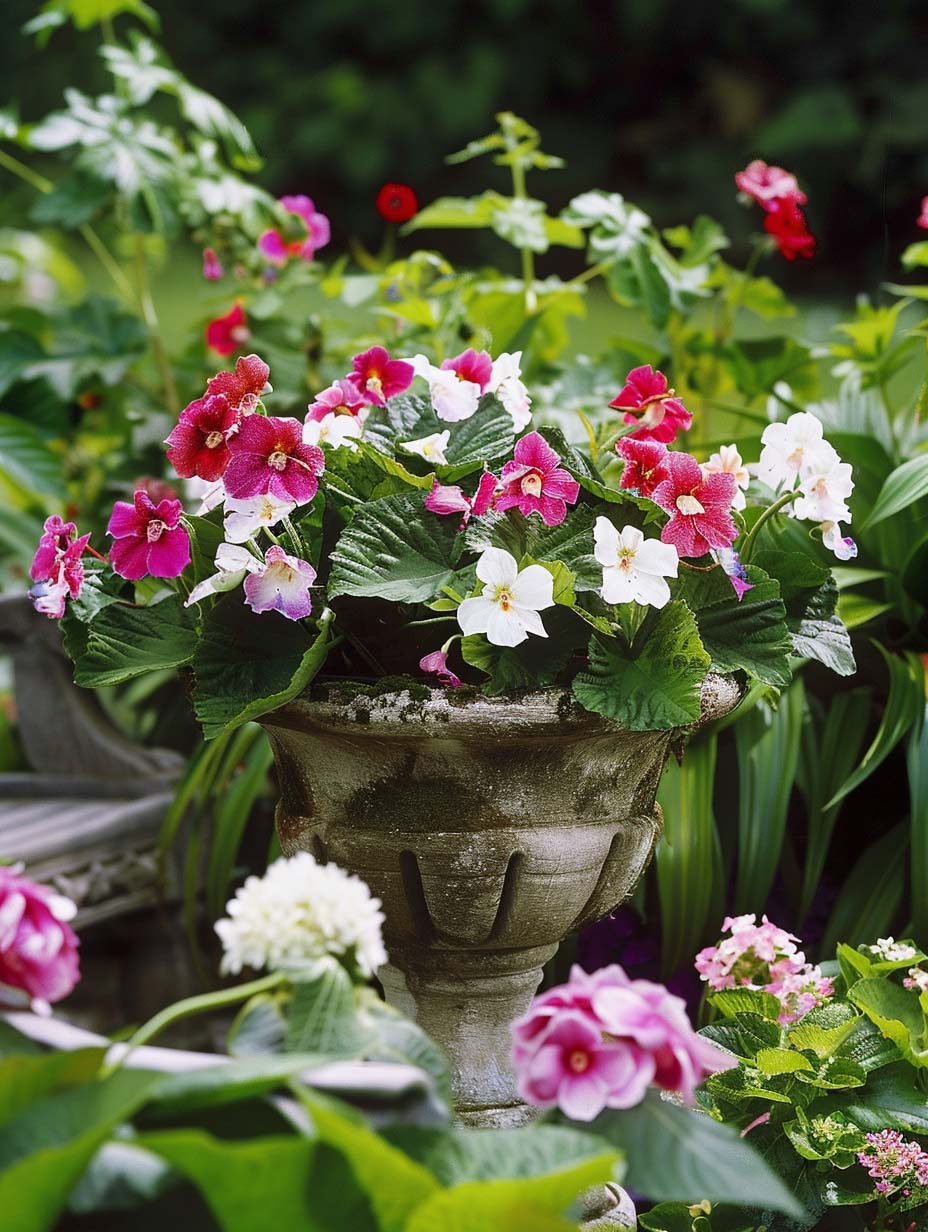
Impatiens are ideal for shady patios, providing a burst of color in areas where other plants might struggle. These flowers are known for their ability to thrive in low-light conditions and their wide range of colors, including pink, red, white, and purple.
Impatiens are particularly well-suited for container gardening, hanging baskets, and garden beds in shaded areas.
Impatiens prefer moist, well-drained soil and should be watered regularly, especially during hot, dry periods. They thrive in partial to full shade, making them perfect for patios with limited sunlight.
These flowers are relatively low maintenance and do not require frequent fertilization to flourish.
An interesting fact about impatiens is their use in traditional medicine. In some cultures, impatiens have been used to treat minor skin ailments and inflammations.
Additionally, impatiens are known for their rapid growth and prolific blooming, making them a favorite among gardeners looking to quickly add color and vibrancy to their outdoor spaces.
Best USDA Zones: 10-11 (can be grown as annuals in cooler zones)
6. Lavender
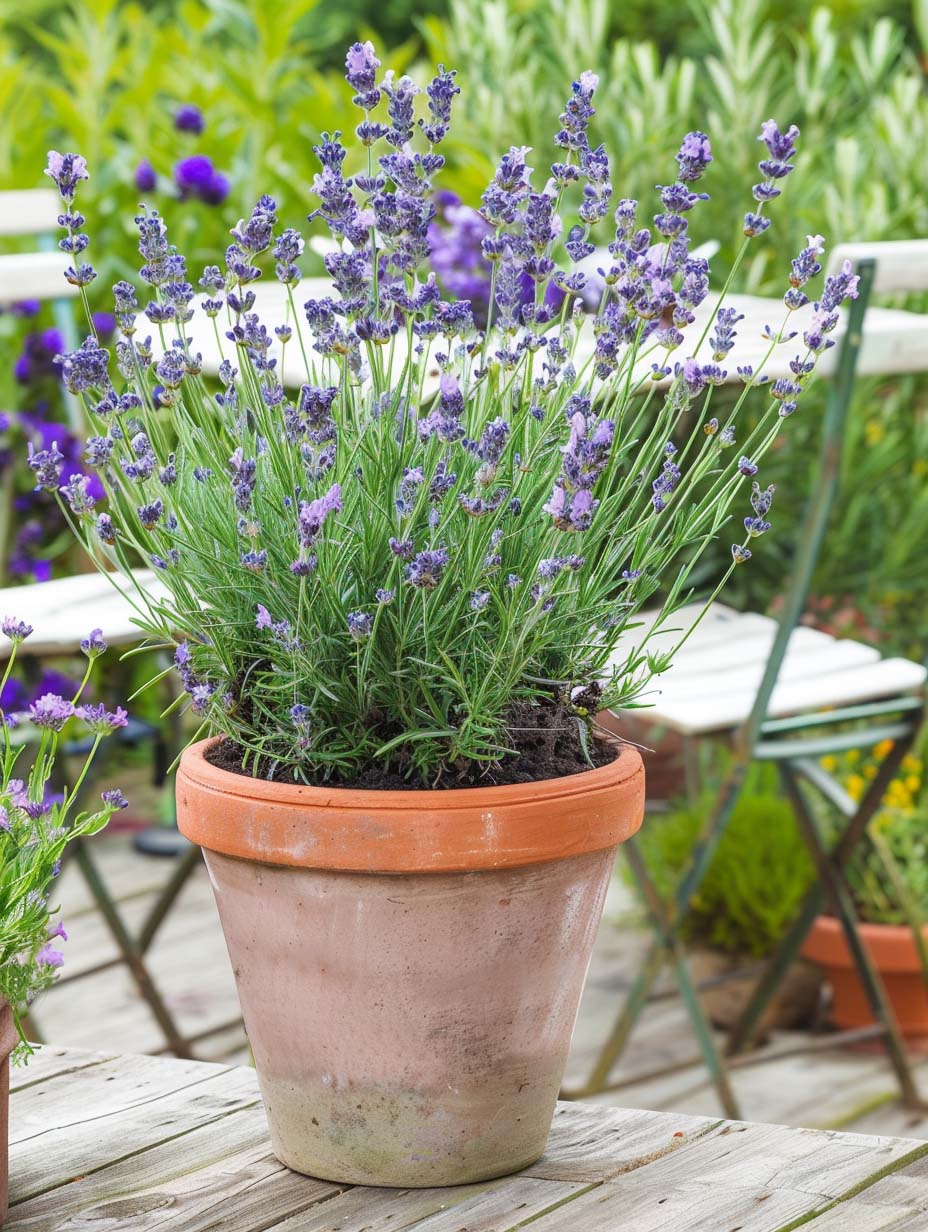
Lavender is a fantastic choice for patio containers due to its aromatic properties and attractive appearance.
This perennial herb is known for its fragrant, purple blooms and silvery-green foliage, which can add a touch of elegance to any patio. Lavender is also drought-tolerant and can thrive in a variety of climates, making it a versatile and hardy choice.
Lavender prefers full sun and well-drained soil, and it requires minimal watering once established. This plant is relatively low maintenance, needing only occasional pruning to remove spent blooms and maintain its shape.
Lavender’s fragrant flowers can be harvested and used for various purposes, including sachets, oils, and culinary dishes.
An interesting fact about lavender is its use in aromatherapy. The scent of lavender is known to promote relaxation and reduce stress, making it a perfect addition to a patio where you might unwind and relax.
Additionally, lavender attracts pollinators like bees and butterflies, enhancing the biodiversity of your garden.
Best USDA Zones: 5-9
7. Roses
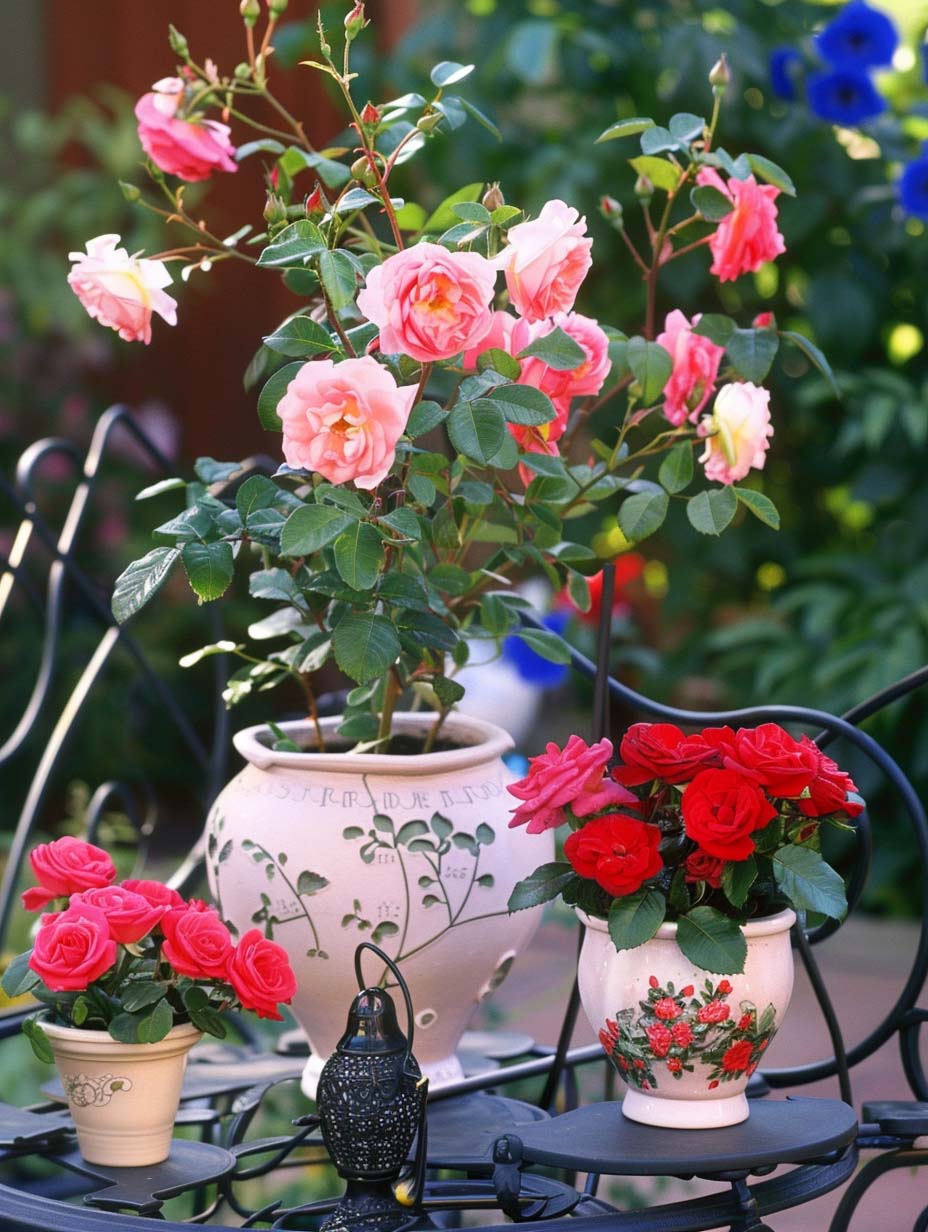
Miniature or patio roses are an excellent choice for adding elegance and fragrance to your patio. These compact roses are bred to thrive in containers, making them perfect for small spaces. They offer the same beauty and variety of colors as larger rose bushes, including red, pink, yellow, and white blooms.
Roses prefer full sun and well-drained soil. They require regular watering and benefit from fertilization during the growing season. Pruning is essential to maintain their shape and encourage new growth. Despite their slightly higher maintenance compared to some other patio plants, the stunning blooms and delightful fragrance make them well worth the effort.
An interesting fact about roses is their symbolic meaning. Roses have been associated with love and beauty for centuries and are often used in celebrations and special occasions. Additionally, rose petals can be used to make rose water or added to dishes for a touch of floral flavor, adding a practical element to their ornamental value.
Best USDA Zones: 5-9 (varies with specific rose varieties)
8. Dahlias
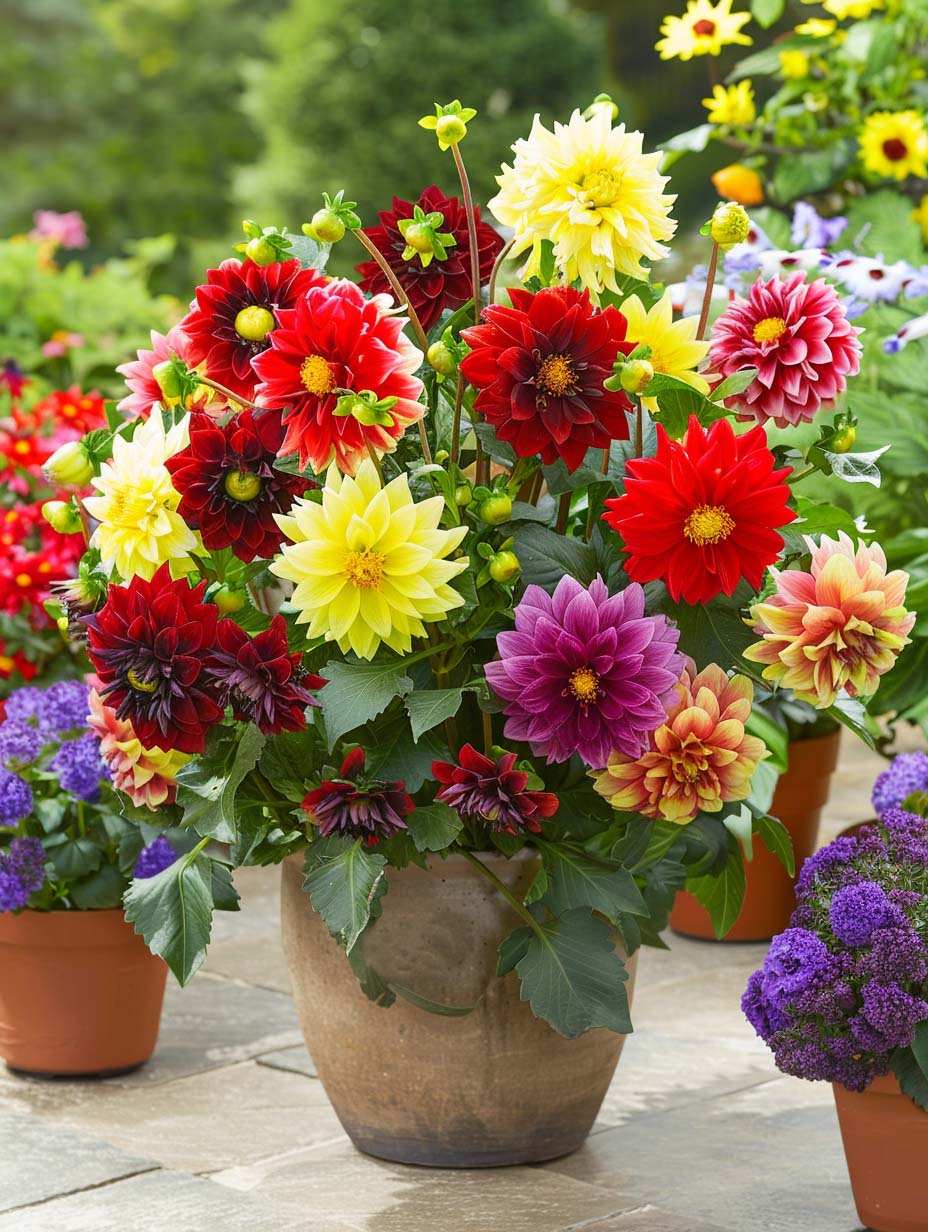
Dahlias are known for their large, dramatic flowers and are a striking choice for patio containers. These flowers come in a wide range of colors and shapes, from small pom-poms to large, dinner-plate-sized blooms, making them a versatile and eye-catching addition to any patio. Dahlias can provide continuous color from mid-summer to the first frost.
Dahlias prefer full sun and rich, well-drained soil. They require regular watering and benefit from a balanced fertilizer to support their vigorous growth and abundant blooms. While dahlias may require staking to support their tall, heavy flowers, their stunning display makes them a rewarding choice for patio gardeners.
An interesting fact about dahlias is their origin. Native to Mexico, dahlias were once cultivated by the Aztecs for their edible tubers and medicinal properties. Today, they are primarily grown for their ornamental beauty, and their diverse forms and colors make them a favorite among gardeners and floral designers alike.
Best USDA Zones: 8-11 (can be grown as annuals or lifted and stored in cooler zones)
9. Fuchsias
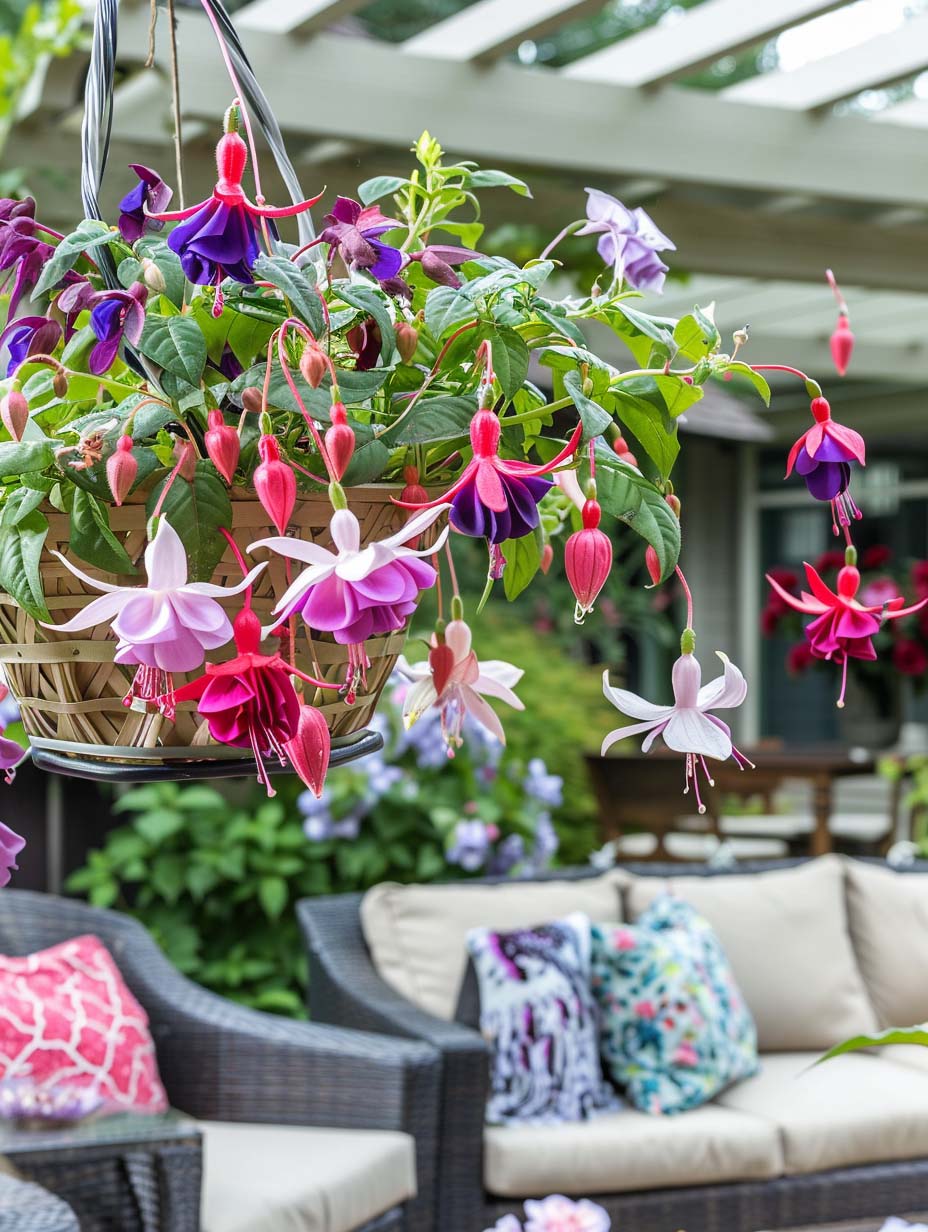
Fuchsias are perfect for adding a touch of elegance and whimsy to shaded patios. Known for their distinctive, drooping flowers that resemble ballerinas, fuchsias come in a variety of colors, including pink, purple, red, and white. These flowers thrive in hanging baskets, making them ideal for creating vertical interest in your patio garden.
Fuchsias prefer partial to full shade and well-drained soil. They require regular watering and benefit from a balanced fertilizer during the growing season. To encourage continuous blooms, it’s important to remove spent flowers regularly. Fuchsias are relatively easy to care for and can add a unique charm to your patio.
An interesting fact about fuchsias is their namesake. Named after the German botanist Leonhart Fuchs, these flowers have been cultivated since the late 17th century. Their unique flower shape and vibrant colors have made them a favorite in gardens around the world, and they continue to be popular for their beauty and versatility.
Best USDA Zones: 9-11 (can be grown as annuals in cooler zones)
10. Hydrangeas
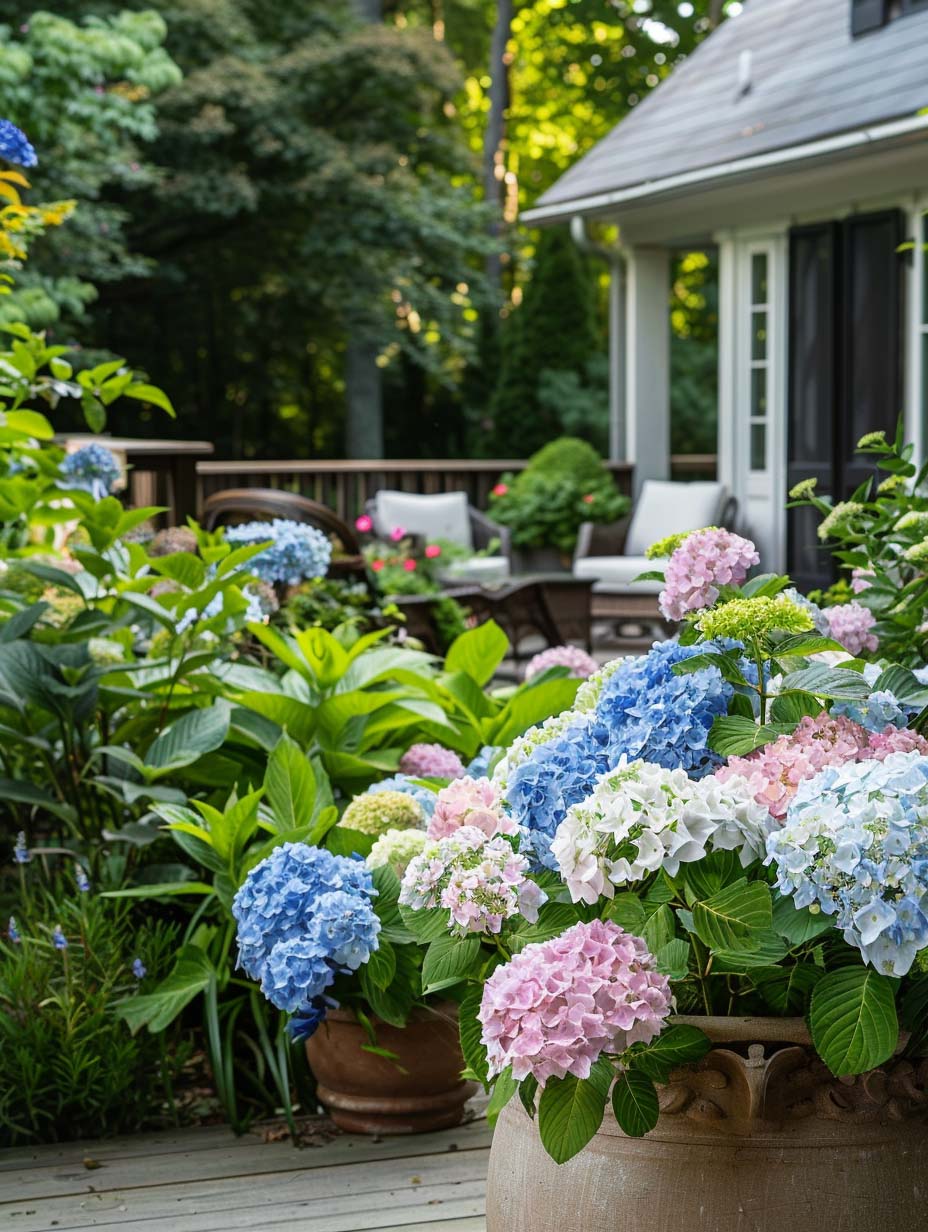
Hydrangeas are a beautiful choice for patio containers, offering large, showy blooms that can add a touch of elegance to any outdoor space. These flowers come in a variety of colors, including blue, pink, white, and purple, and their color can often be influenced by the soil pH, allowing for some customization of your patio display.
Hydrangeas prefer partial shade and well-drained soil. They require regular watering, especially during hot weather, and benefit from occasional feeding with a balanced fertilizer. Hydrangeas are relatively easy to care for and can provide stunning blooms from late spring to early autumn.
An interesting fact about hydrangeas is their ability to change color based on soil pH. For example, blue hydrangeas can turn pink if the soil becomes less acidic, while pink hydrangeas can turn blue if the soil becomes more acidic. This unique characteristic adds an extra layer of interest to growing hydrangeas, allowing gardeners to experiment with different soil treatments.
Best USDA Zones: 3-9 (varies with specific hydrangea varieties)
11. Pansies
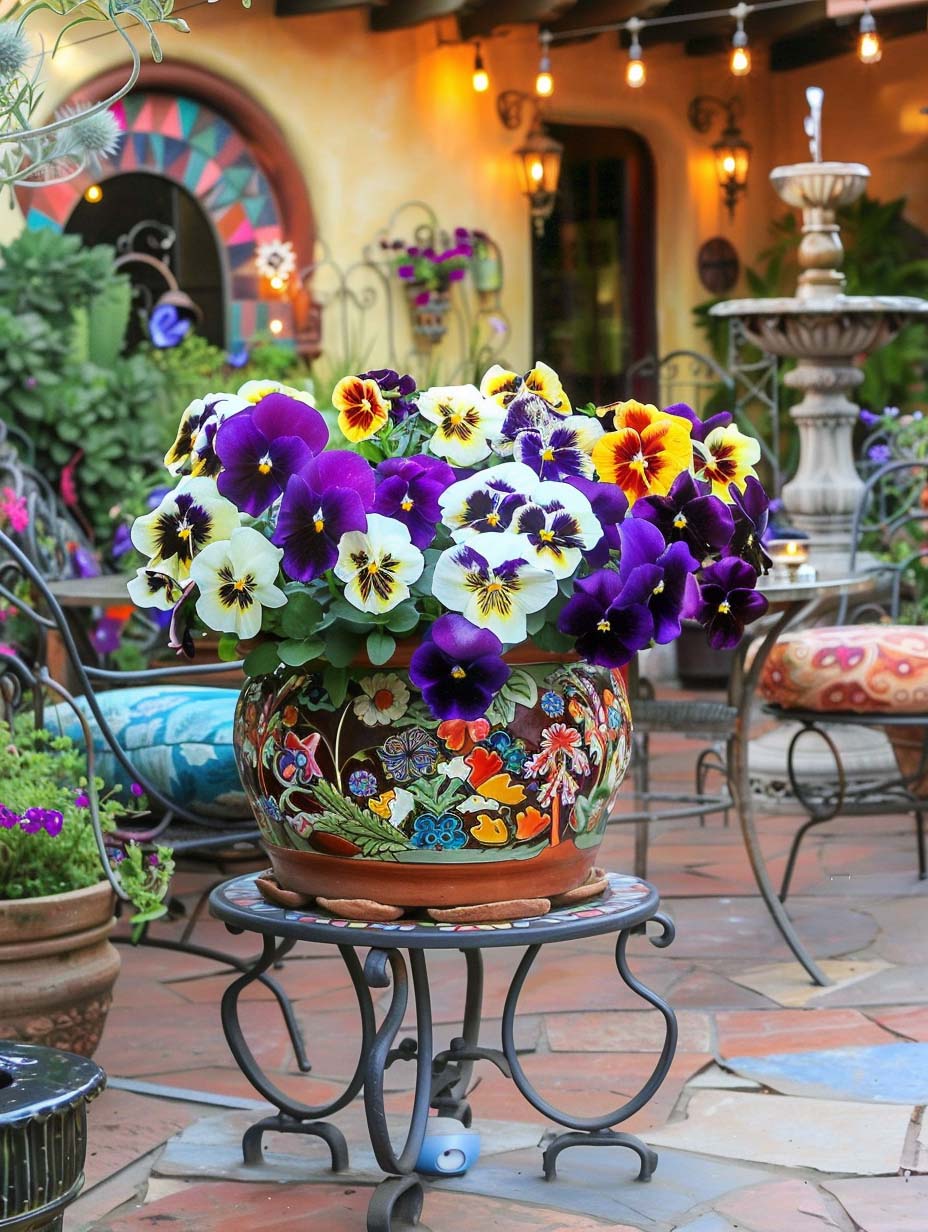
Pansies are a delightful choice for patio containers due to their cheerful, bright blooms and ability to thrive in cooler temperatures. These flowers are known for their distinctive “faces,” with dark central markings contrasting with the petals’ vibrant colors, including purple, yellow, blue, and red. Pansies can add a touch of whimsy and charm to any patio, making them a favorite among gardeners.
Pansies thrive in full sun to partial shade and prefer well-drained soil. They are relatively low maintenance and can tolerate cooler weather, making them perfect for spring and fall plantings. Regular watering and deadheading spent blooms can help extend their blooming period and keep your patio looking vibrant.
An interesting fact about pansies is their edibility. Pansy flowers can be used to garnish salads, desserts, and drinks, adding a colorful and decorative touch. They have a mild, slightly sweet flavor and can also be candied for a unique treat. This versatility makes pansies not only a beautiful but also a practical addition to your patio garden.
Best USDA Zones: 6-10 (grown as annuals or biennials)
12. Zinnias
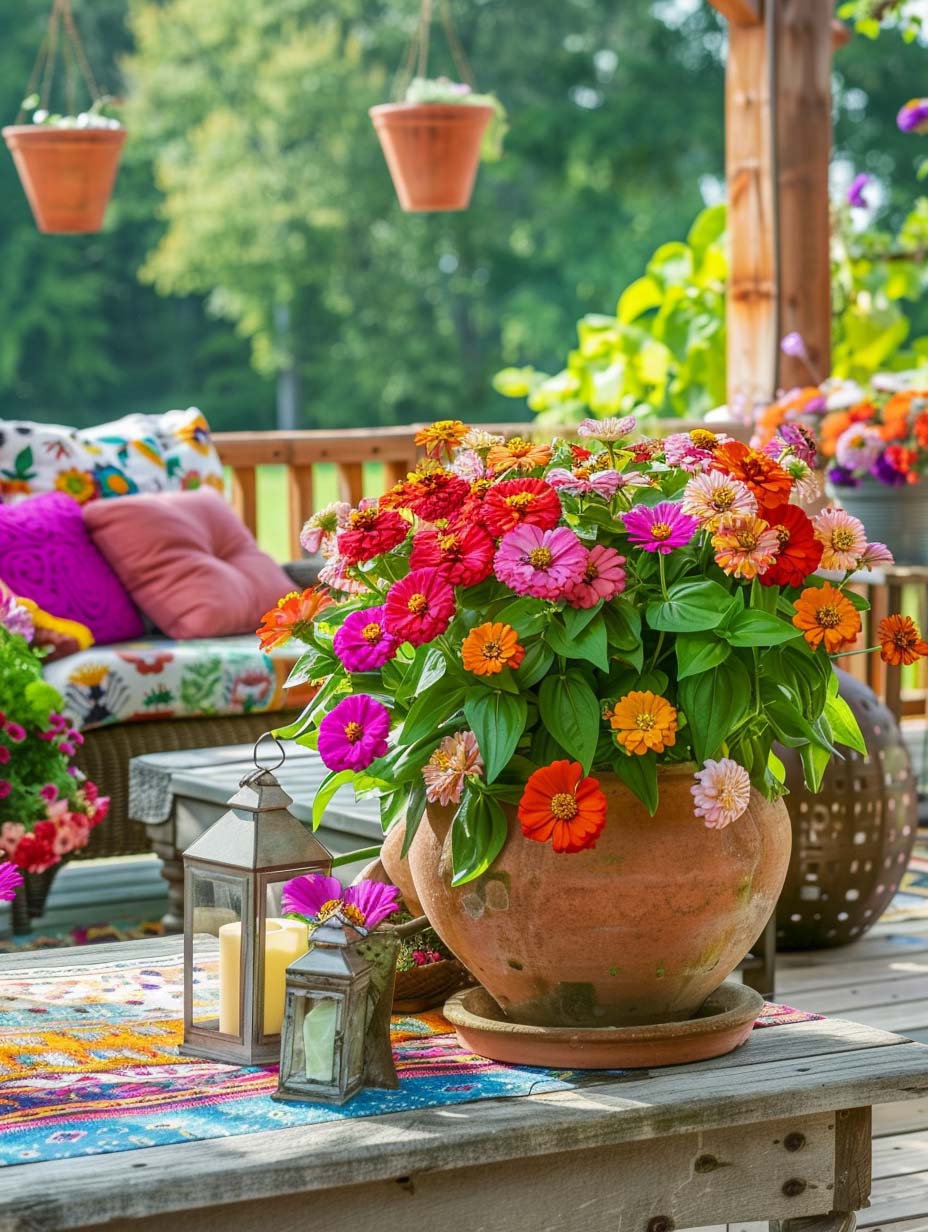
Zinnias are known for their vibrant, bold colors and long blooming season, making them an excellent choice for patio containers. These flowers come in a variety of shapes and sizes, from small, single blooms to large, double blooms, providing endless possibilities for creating eye-catching displays. Zinnias can add a burst of color to any patio, creating a lively and inviting atmosphere.
Zinnias thrive in full sun and well-drained soil. They are relatively easy to grow and require minimal maintenance, making them perfect for both novice and experienced gardeners. Regular watering and deadheading can help promote continuous blooming throughout the growing season.
An interesting fact about zinnias is their history. Native to Mexico, zinnias were first discovered by European explorers in the 16th century. They were initially considered unattractive, but selective breeding over the years has transformed them into the beautiful, colorful flowers we know today. Zinnias are also known for attracting pollinators like butterflies, adding to the ecological value of your patio garden.
Best USDA Zones: 3-10 (grown as annuals)
13. Calibrachoa
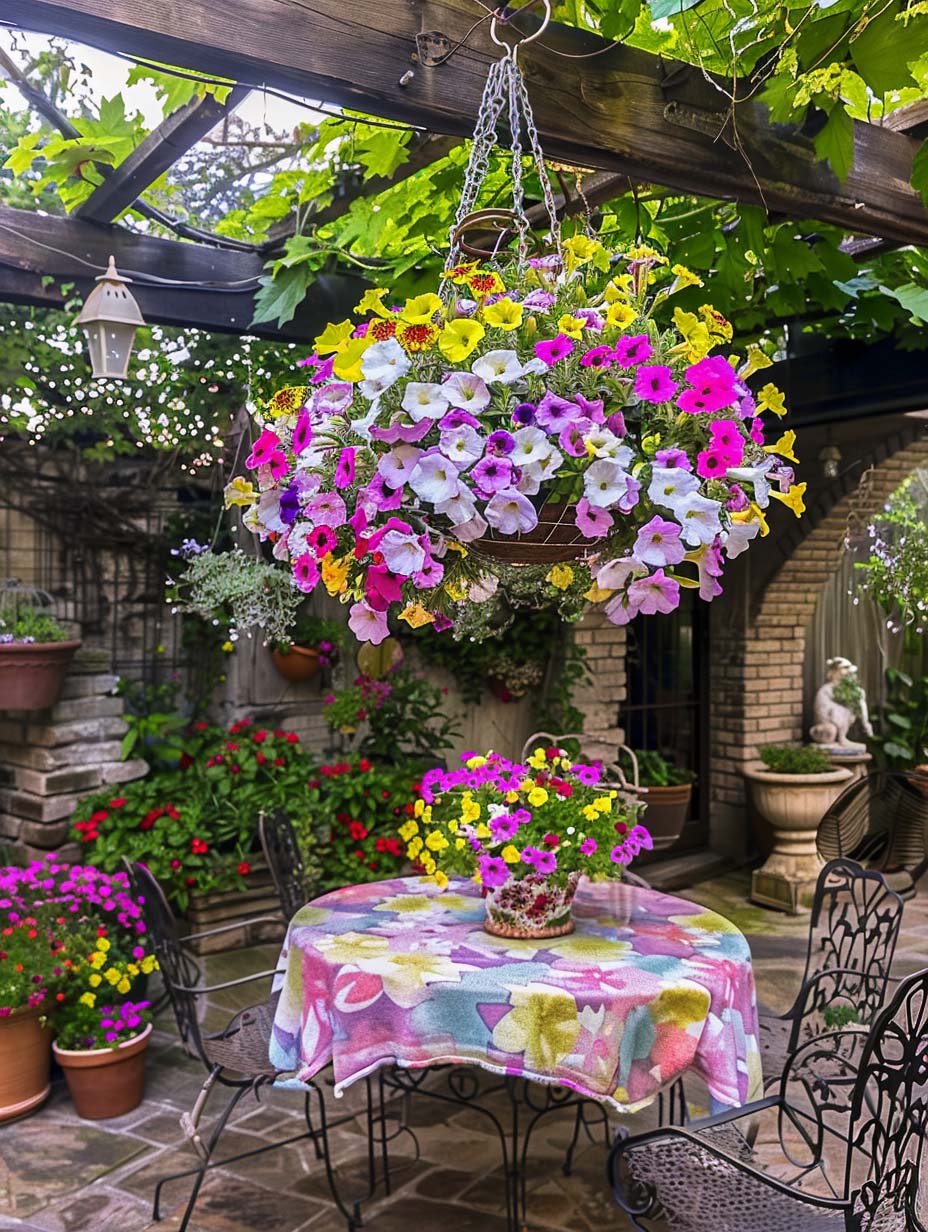
Calibrachoa, also known as million bells, is a fantastic choice for patio containers due to its abundant, small, petunia-like flowers. These flowers come in a wide range of colors, including pink, purple, yellow, and white, and are perfect for hanging baskets, window boxes, and containers. Calibrachoa can create a lush, cascading effect, adding depth and dimension to your patio garden.
Calibrachoa thrives in full sun to partial shade and prefers well-drained soil. They are relatively low maintenance and require regular watering and occasional feeding to promote continuous blooms. Their self-cleaning nature means they don’t require deadheading, making them an easy-care option for busy gardeners.
An interesting fact about calibrachoa is its ability to withstand harsh weather conditions. These resilient flowers can tolerate heat, drought, and even some frost, making them suitable for various climates. Additionally, calibrachoa is known to attract hummingbirds and butterflies, enhancing the biodiversity and beauty of your patio garden.
Best USDA Zones: 9-11 (can be grown as annuals in cooler zones)
14. Snapdragons
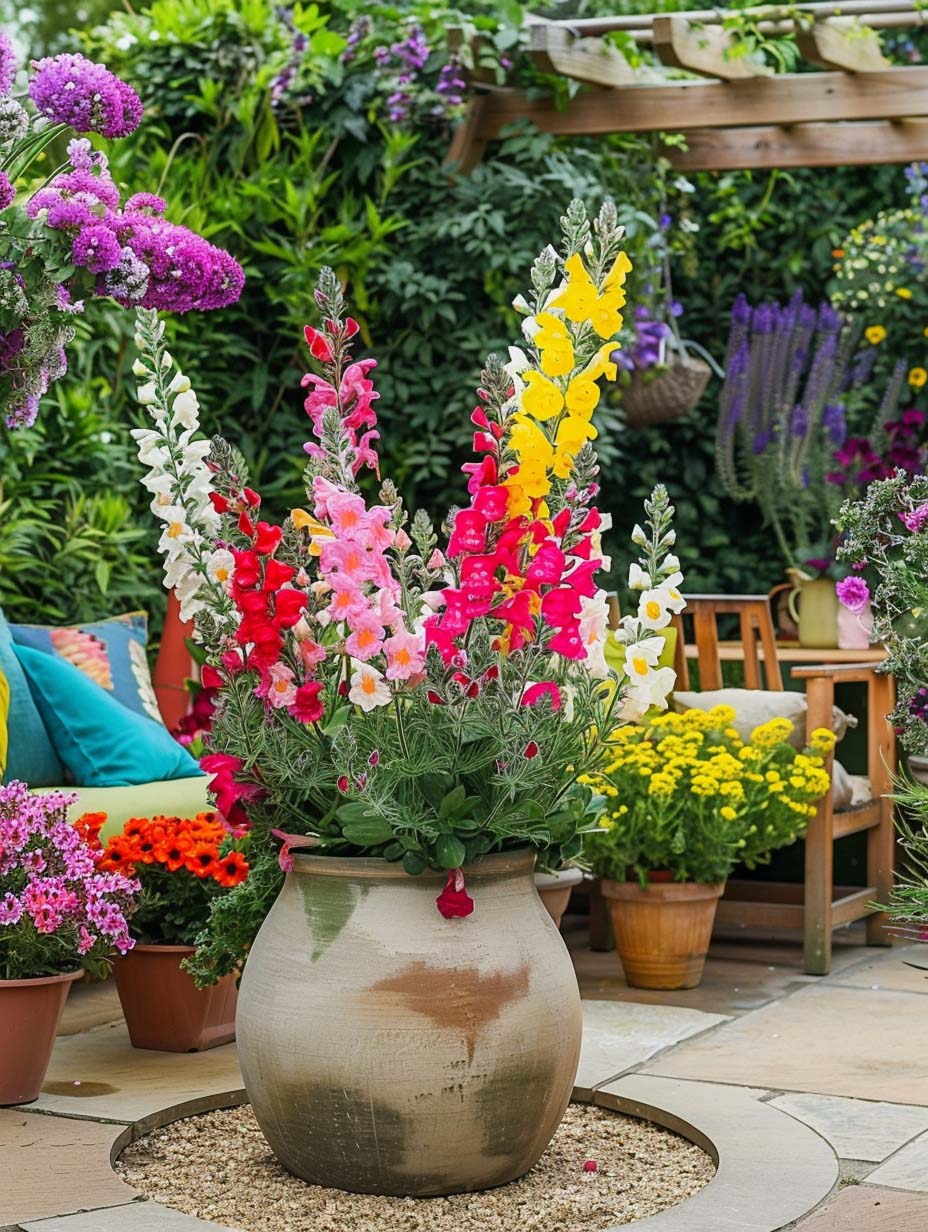
Snapdragons are an excellent choice for patio containers due to their unique, dragon-shaped blooms and vibrant colors. These flowers come in various shades, including red, pink, yellow, and white, and can add vertical interest to your patio garden. Snapdragons are known for their long blooming period and ability to thrive in cooler temperatures.
Snapdragons prefer full sun to partial shade and well-drained soil. They are relatively easy to grow and require regular watering and deadheading to promote continuous blooming. Snapdragons can also tolerate light frost, making them ideal for extending the flowering season into late fall or early spring.
An interesting fact about snapdragons is their botanical name, Antirrhinum, which means “like a snout” in Greek. This name refers to the flower’s resemblance to a dragon’s snout, which can be “snapped” open when squeezed. Snapdragons have been used in traditional medicine for their anti-inflammatory properties and are also known to attract pollinators, adding ecological value to your patio garden.
Best USDA Zones: 7-11 (grown as annuals in cooler zones)
15. Ornamental Peppers
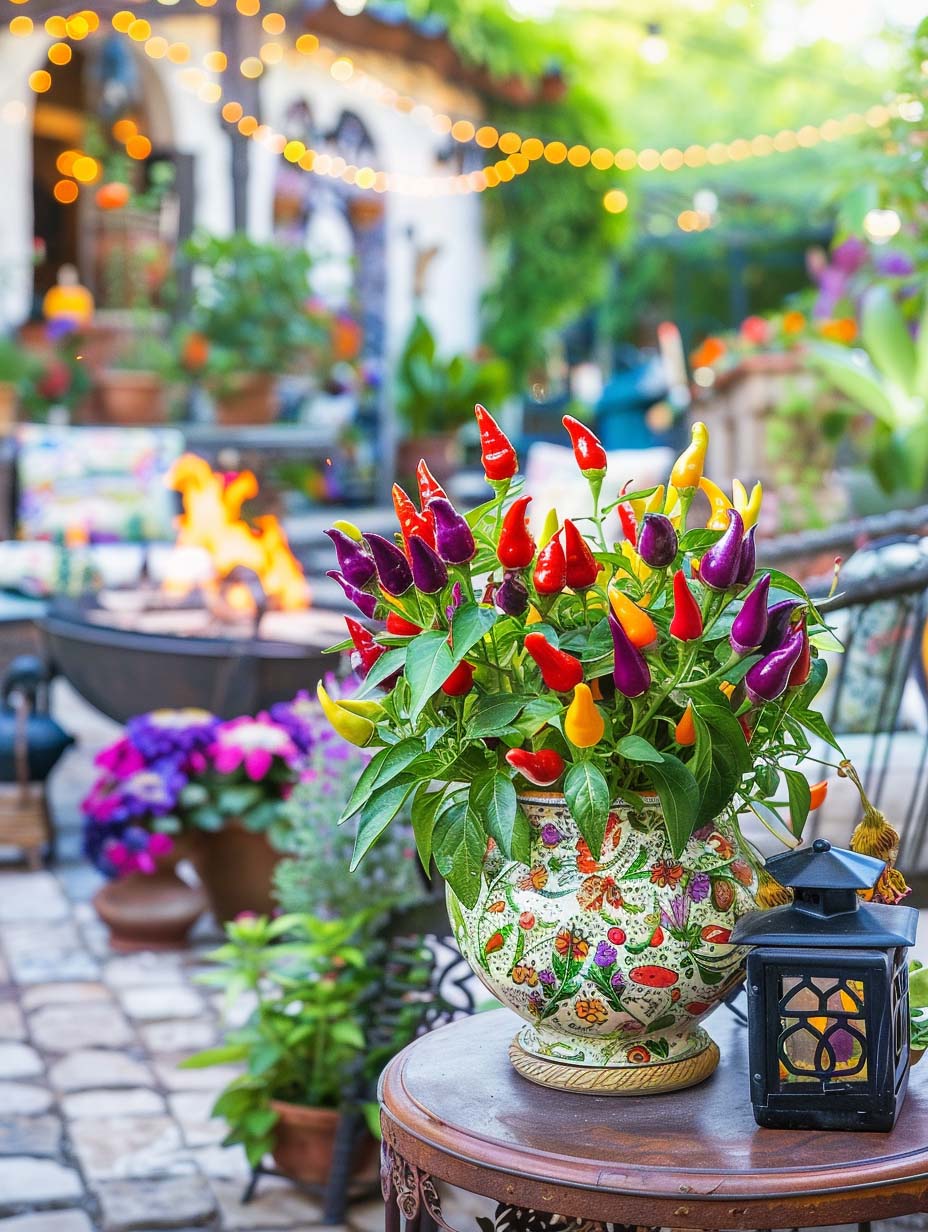
Ornamental peppers are a vibrant and unique choice for patio containers, known for their colorful, edible peppers that come in shades of red, yellow, orange, and purple. These plants can add a festive touch to any patio, creating a lively and playful atmosphere. Ornamental peppers are also compact and well-suited for container gardening.
Ornamental peppers prefer full sun and well-drained soil. They require regular watering and benefit from occasional feeding with a balanced fertilizer to support their growth and fruit production. These plants are relatively low maintenance and can provide continuous color throughout the growing season.
An interesting fact about ornamental peppers is their versatility. While primarily grown for their decorative appeal, the peppers are also edible and can be used in cooking, although they can be quite hot. Ornamental peppers can also help deter pests, as their capsaicin content makes them less appealing to insects, adding a practical benefit to their ornamental value.
Best USDA Zones: 9-11 (grown as annuals in cooler zones)
16. Coleus
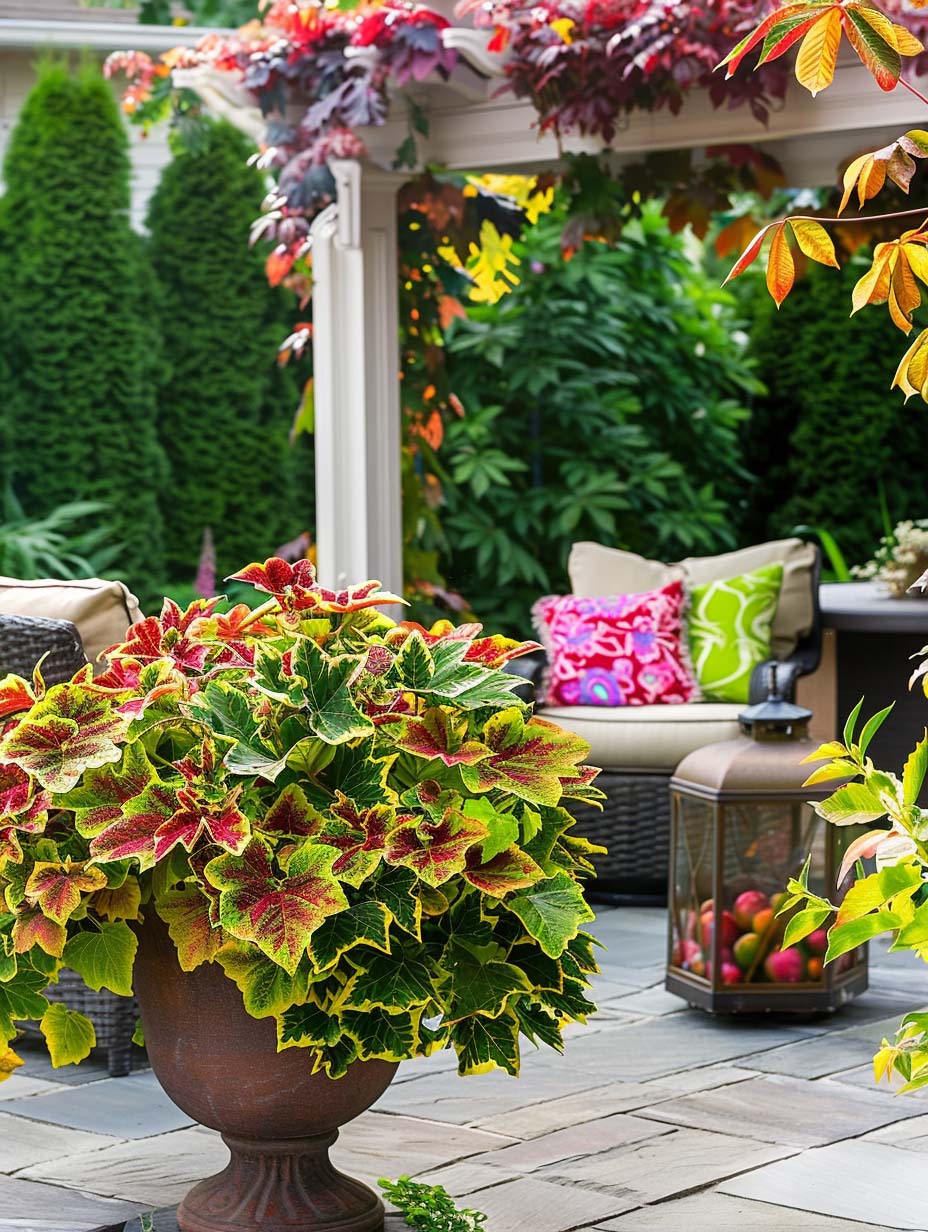
Coleus is a fantastic choice for shaded patios, known for its vibrant and colorful foliage. These plants come in a variety of colors, including shades of green, red, pink, and yellow, and can add a splash of color to areas where flowering plants might struggle. Coleus can create a lush, tropical feel, making your patio a more inviting space.
Coleus prefers partial to full shade and well-drained soil. They require regular watering to keep the soil consistently moist but not waterlogged. Coleus is relatively easy to care for and can be pinched back to encourage bushier growth and maintain their shape.
An interesting fact about coleus is their use in traditional medicine. Some cultures have used coleus extracts for their potential health benefits, including treating heart conditions and digestive issues. Additionally, coleus plants can be easily propagated from cuttings, making it simple to expand your patio garden or share plants with friends and family.
Best USDA Zones: 10-11 (can be grown as annuals in cooler zones)
17. Lantana
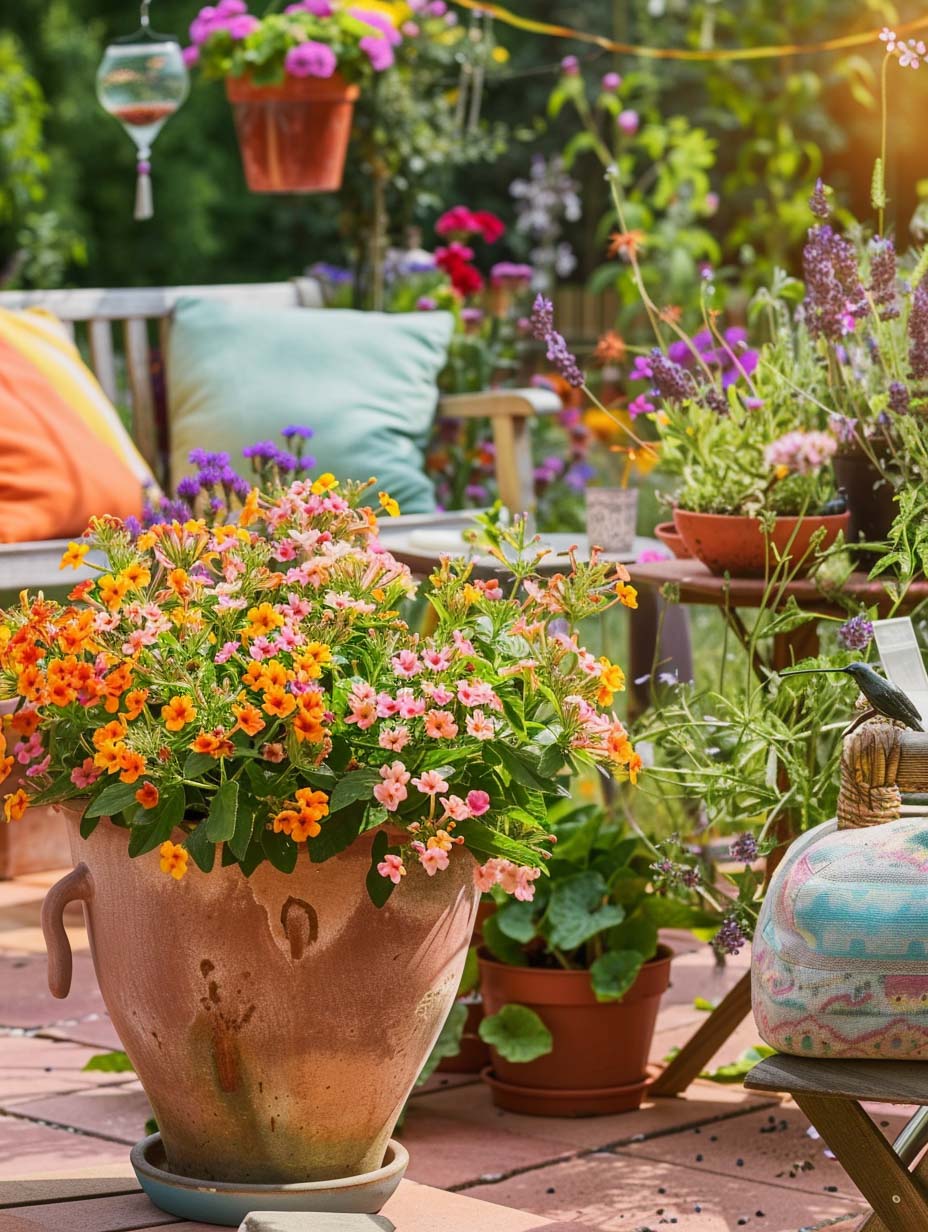
Lantana is an excellent choice for patio containers, known for its vibrant clusters of small flowers that attract butterflies and other pollinators. These flowers come in a variety of colors, including orange, pink, yellow, and red, and can provide continuous color from spring through fall. Lantana is also drought-tolerant and can thrive in hot, sunny conditions.
Lantana prefers full sun and well-drained soil. They require minimal maintenance, with occasional watering and feeding to promote healthy growth and blooming. Lantana is also known for its resilience, being able to tolerate heat and drought conditions, making it a perfect choice for busy gardeners or those in warmer climates.
An interesting fact about lantana is its ability to change flower colors as they age. This characteristic creates a multicolored effect on a single plant, adding to its visual appeal. Additionally, lantana has been used in traditional medicine for its antibacterial and anti-inflammatory properties, making it both a beautiful and beneficial addition to your patio garden.
Best USDA Zones: 8-11
18. Alyssum
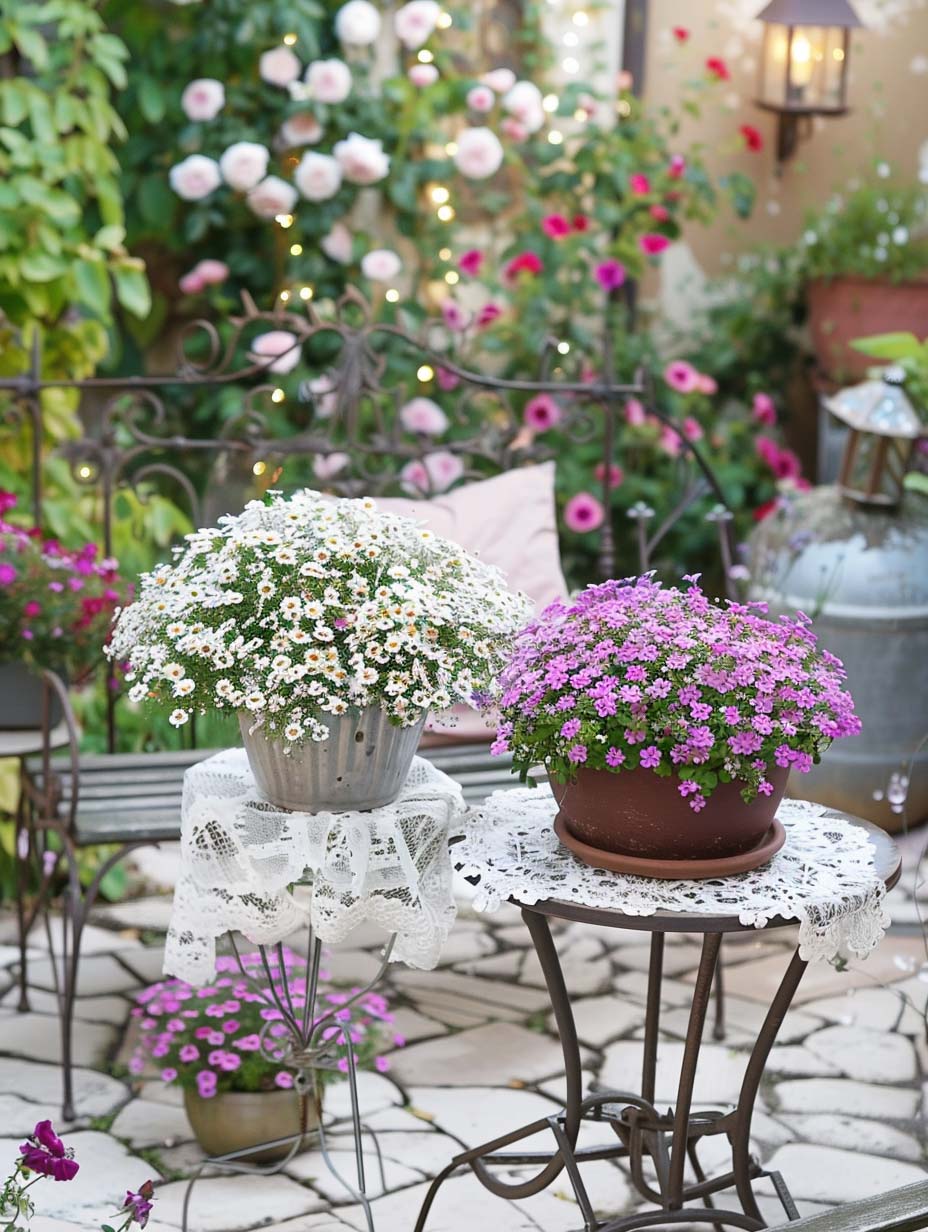
Alyssum is a charming choice for patio containers, known for its small, fragrant flowers that create a carpet-like effect. These flowers come in shades of white, pink, and purple and can add a delicate touch to any patio. Alyssum is often used as a ground cover or border plant but can also thrive in containers and hanging baskets.
Alyssum prefers full sun to partial shade and well-drained soil. They require regular watering to keep the soil consistently moist, especially during hot weather. Alyssum is relatively low maintenance and can bloom continuously from spring to fall with proper care, adding long-lasting beauty to your patio.
An interesting fact about alyssum is its ability to attract beneficial insects, such as bees and ladybugs, which can help pollinate other plants and control garden pests. Alyssum’s sweet fragrance can also enhance the sensory experience of your patio, making it a pleasant place to relax and enjoy the outdoors.
Best USDA Zones: 7-11 (grown as annuals in cooler zones)
19. Sweet Potato Vine
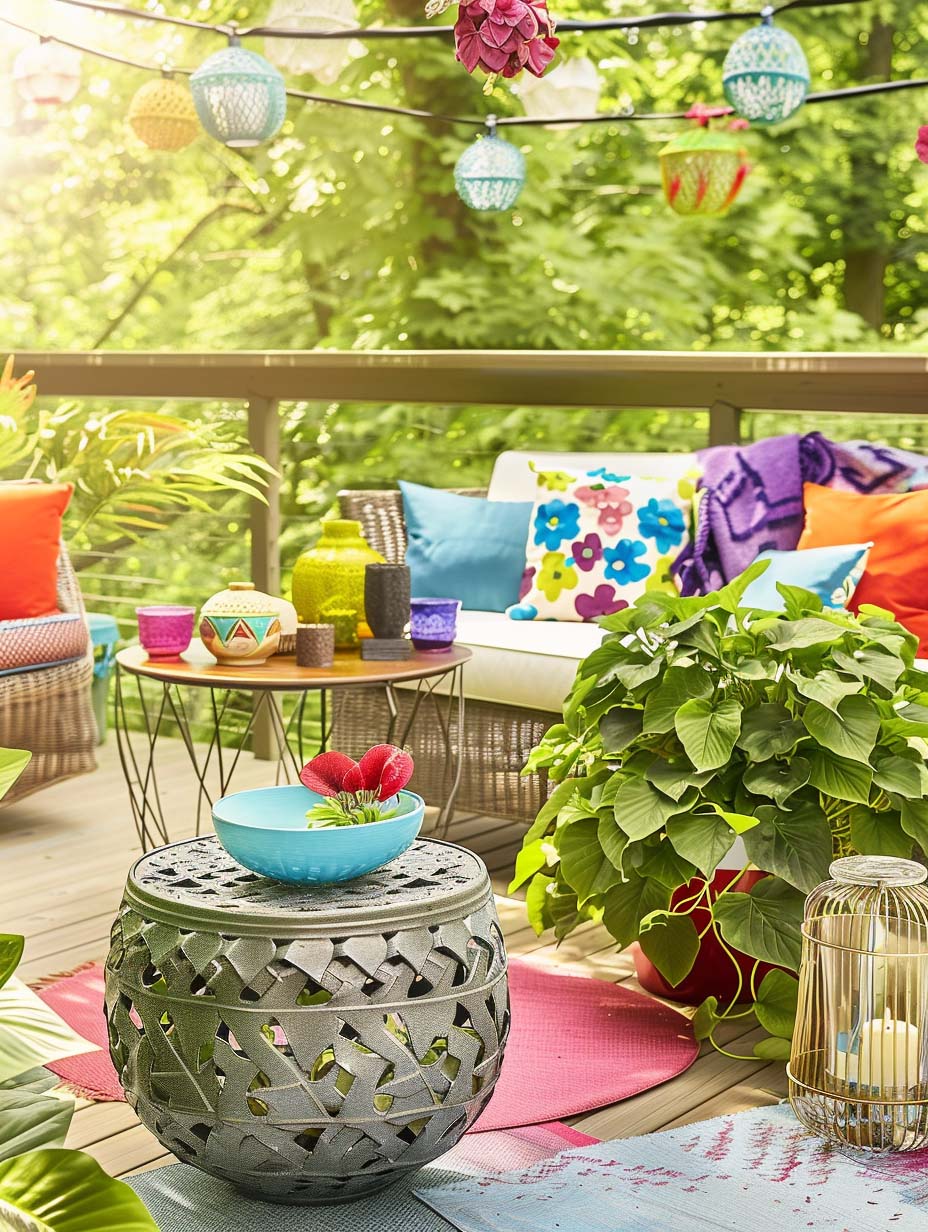
Sweet potato vine is a versatile and visually striking choice for patio containers, known for its lush, trailing foliage in shades of green, purple, and burgundy. These plants can add a dramatic effect to your patio, with their vines cascading over the sides of containers or hanging baskets. Sweet potato vine can complement other flowering plants, creating a lush, tropical feel.
Sweet potato vine prefers full sun to partial shade and well-drained soil. They require regular watering to keep the soil consistently moist but not waterlogged. Sweet potato vine is relatively easy to care for and can be trimmed back to control its growth and maintain its shape.
An interesting fact about sweet potato vine is that it is related to the edible sweet potato, and while the ornamental varieties are not typically grown for their tubers, they can produce small, edible roots. Additionally, sweet potato vine can be easily propagated from cuttings, making it simple to expand your patio garden or share plants with friends and family.
Best USDA Zones: 8-11 (can be grown as annuals in cooler zones)
20. Salvia
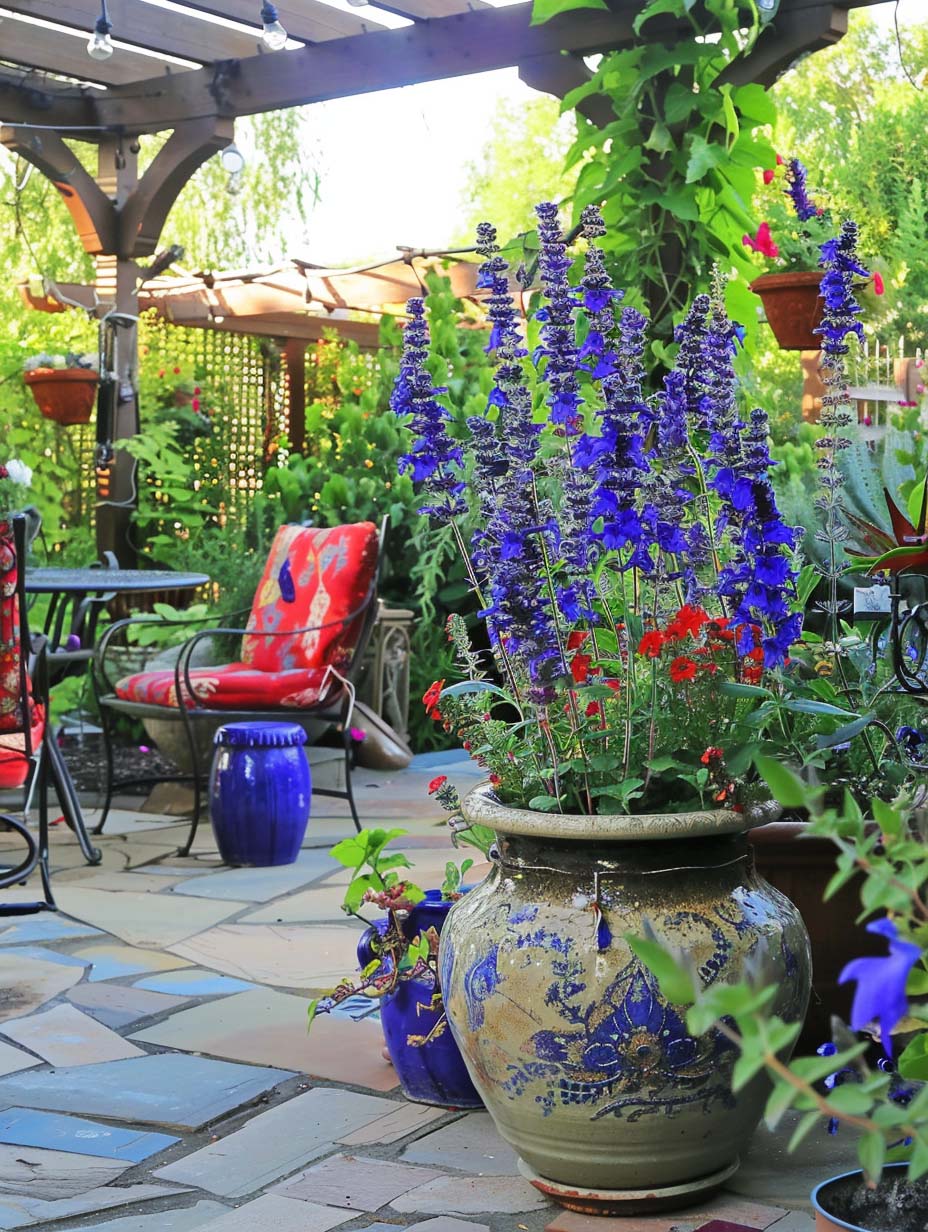
Salvia is a beautiful and hardy choice for patio containers, known for its tall spikes of flowers in shades of blue, red, and purple. These flowers can add vertical interest and vibrant color to your patio garden. Salvia is also a favorite among pollinators, attracting bees, butterflies, and hummingbirds, enhancing the ecological value of your outdoor space.
Salvia prefers full sun and well-drained soil. They require minimal maintenance, with occasional watering and feeding to promote healthy growth and blooming. Salvia is also known for its drought tolerance, making it a great choice for gardeners in warmer climates or those looking for low-maintenance plants.
An interesting fact about salvia is its use in traditional medicine and culinary practices. Some species of salvia, such as sage, are used for their medicinal properties and as culinary herbs. Additionally, salvia flowers can be used to make tea, adding a unique and flavorful element to your patio garden.
Best USDA Zones: 4-10 (varies with specific salvia varieties)
21. Gerbera Daisies
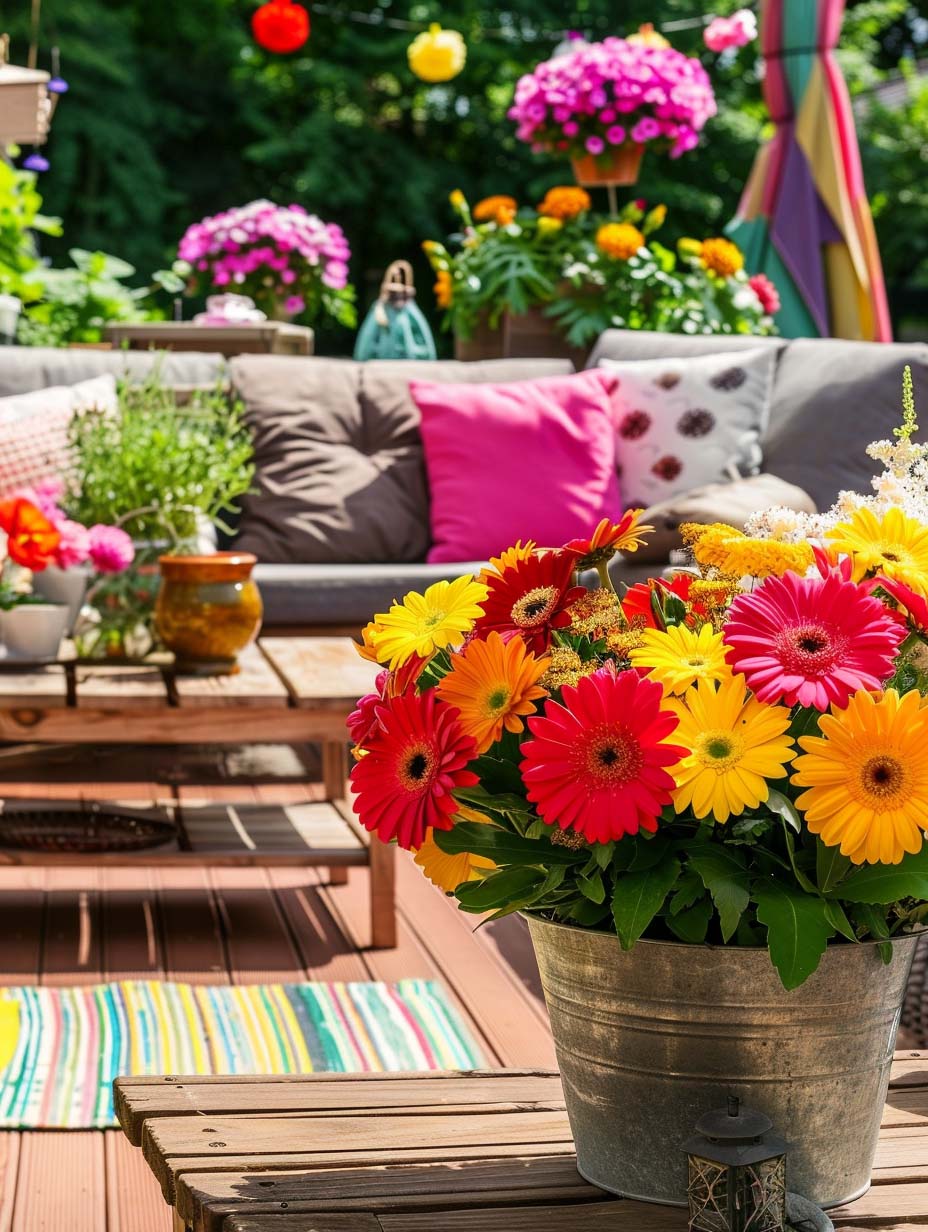
Gerbera daisies are a vibrant choice for patio containers, known for their large, colorful blooms that can brighten any outdoor space. These flowers come in a variety of colors, including red, yellow, pink, and orange, making them perfect for creating a lively and inviting patio. Gerbera daisies are also known for their long-lasting blooms, which can provide continuous color throughout the growing season.
Gerbera daisies prefer full sun and well-drained soil. They require regular watering and occasional feeding to support their vigorous growth and blooming. Deadheading spent flowers can encourage new blooms, keeping your patio looking fresh and vibrant.
An interesting fact about gerbera daisies is their use in air purification. These flowers are known to filter toxins from the air, improving the air quality of your patio. Additionally, gerbera daisies are a popular choice for cut flowers, allowing you to bring their beauty indoors and enjoy their vibrant colors and cheerful appearance in floral arrangements.
Best USDA Zones: 8-10 (can be grown as annuals in cooler zones)
22. Verbena
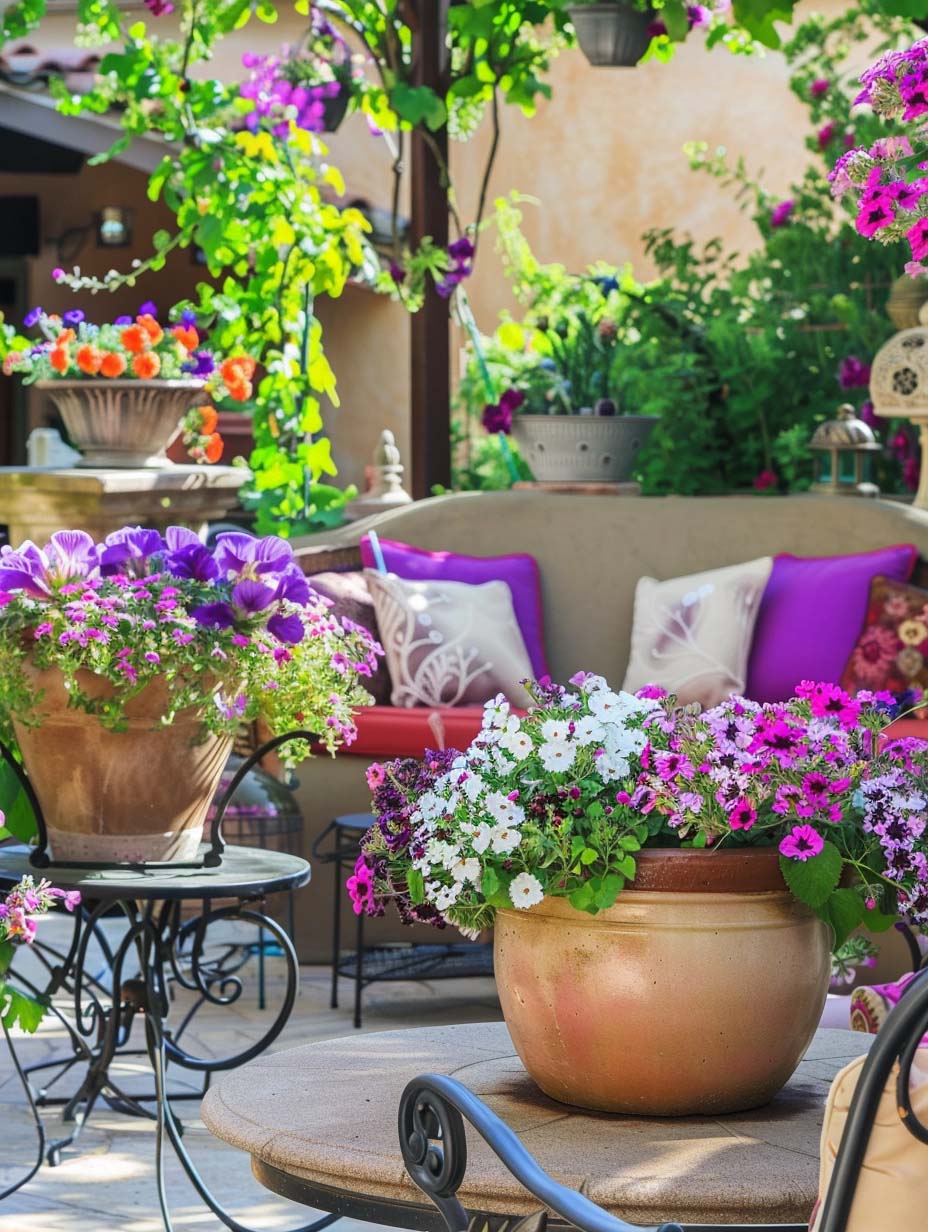
Verbena is an excellent choice for patio containers, known for its clusters of small, colorful flowers that can provide continuous blooms from spring through fall. These flowers come in shades of purple, pink, white, and red, and can add a pop of color to any patio. Verbena is also known for its heat tolerance and ability to thrive in sunny conditions.
Verbena prefers full sun and well-drained soil. They require regular watering and occasional feeding to promote healthy growth and blooming. Verbena is relatively low maintenance and can tolerate heat and drought conditions, making it a perfect choice for busy gardeners or those in warmer climates.
An interesting fact about verbena is its use in traditional medicine. Verbena has been used for its potential health benefits, including treating anxiety, insomnia, and digestive issues. Additionally, verbena flowers are known to attract butterflies and other pollinators, adding ecological value to your patio garden and enhancing its natural beauty.
Best USDA Zones: 7-11 (can be grown as annuals in cooler zones)
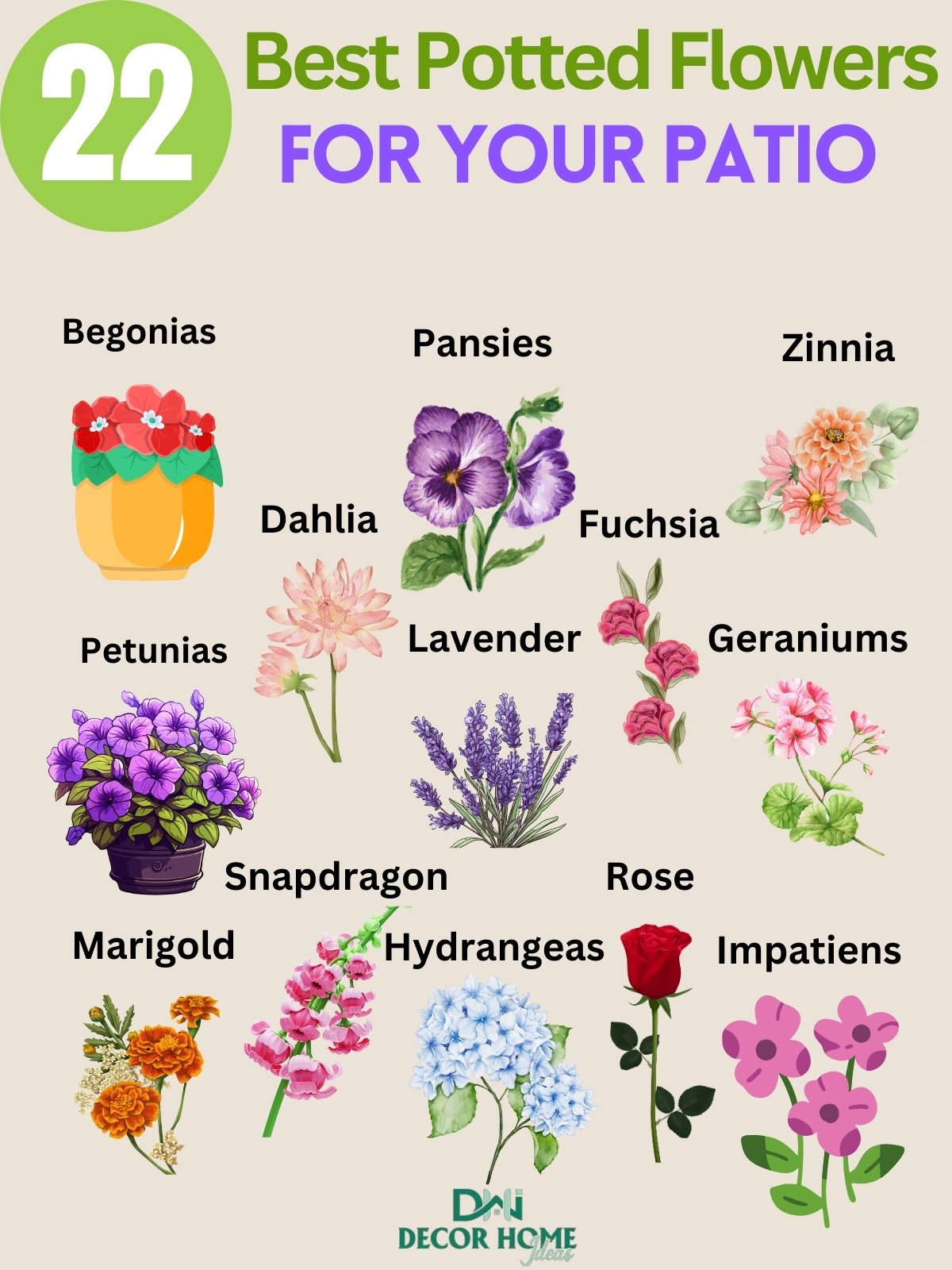
Transform your patio into a floral oasis with these stunning potted flowers. Petunias, pansies, and geraniums provide vibrant color, while lavender and fuchsia add elegance and fragrance.
Marigolds and zinnias bring cheerful blooms, and hydrangeas create a lush display.
With roses, snapdragons, and impatiens, your patio will be a breathtaking retreat filled with beauty and charm!


